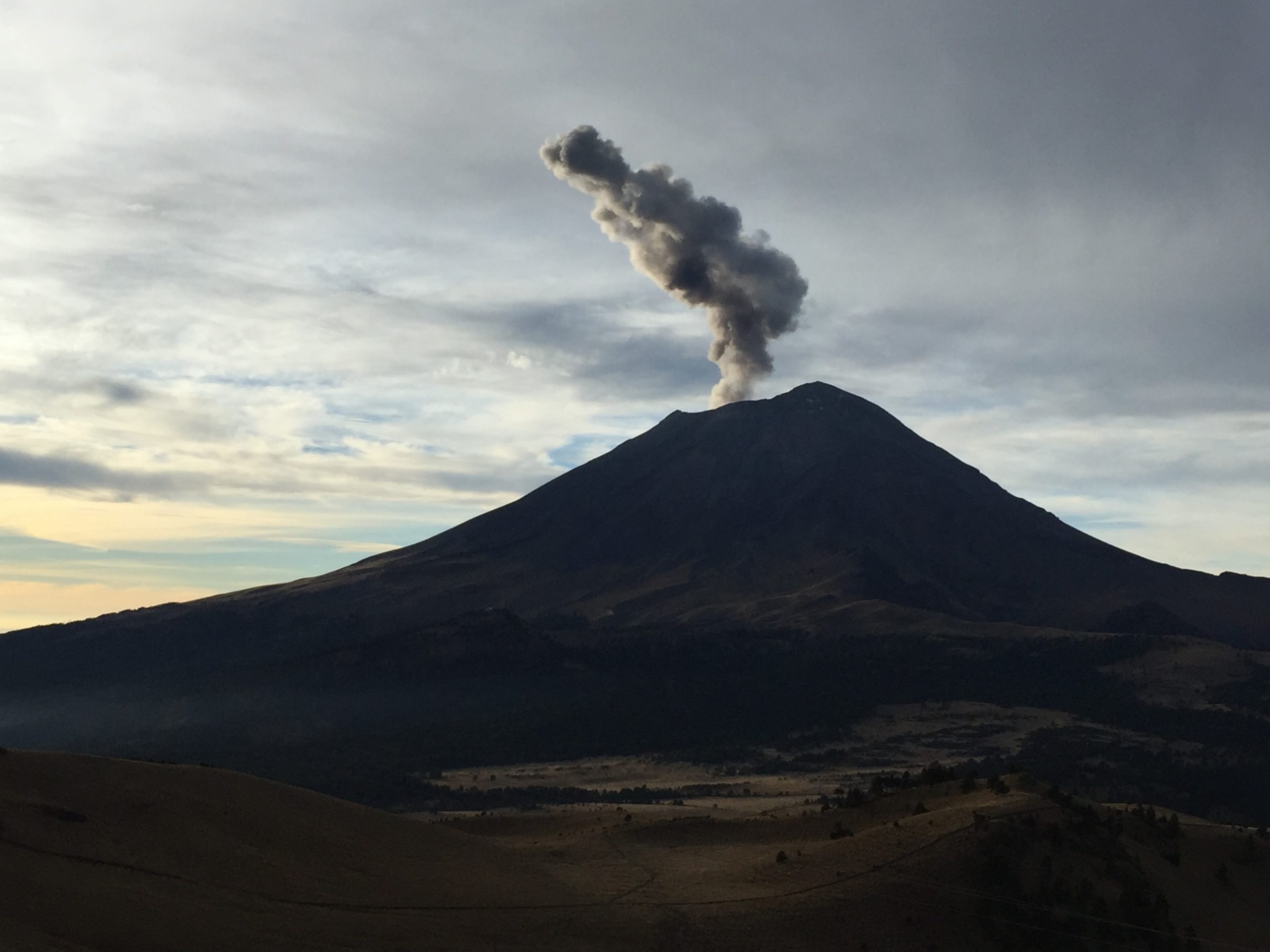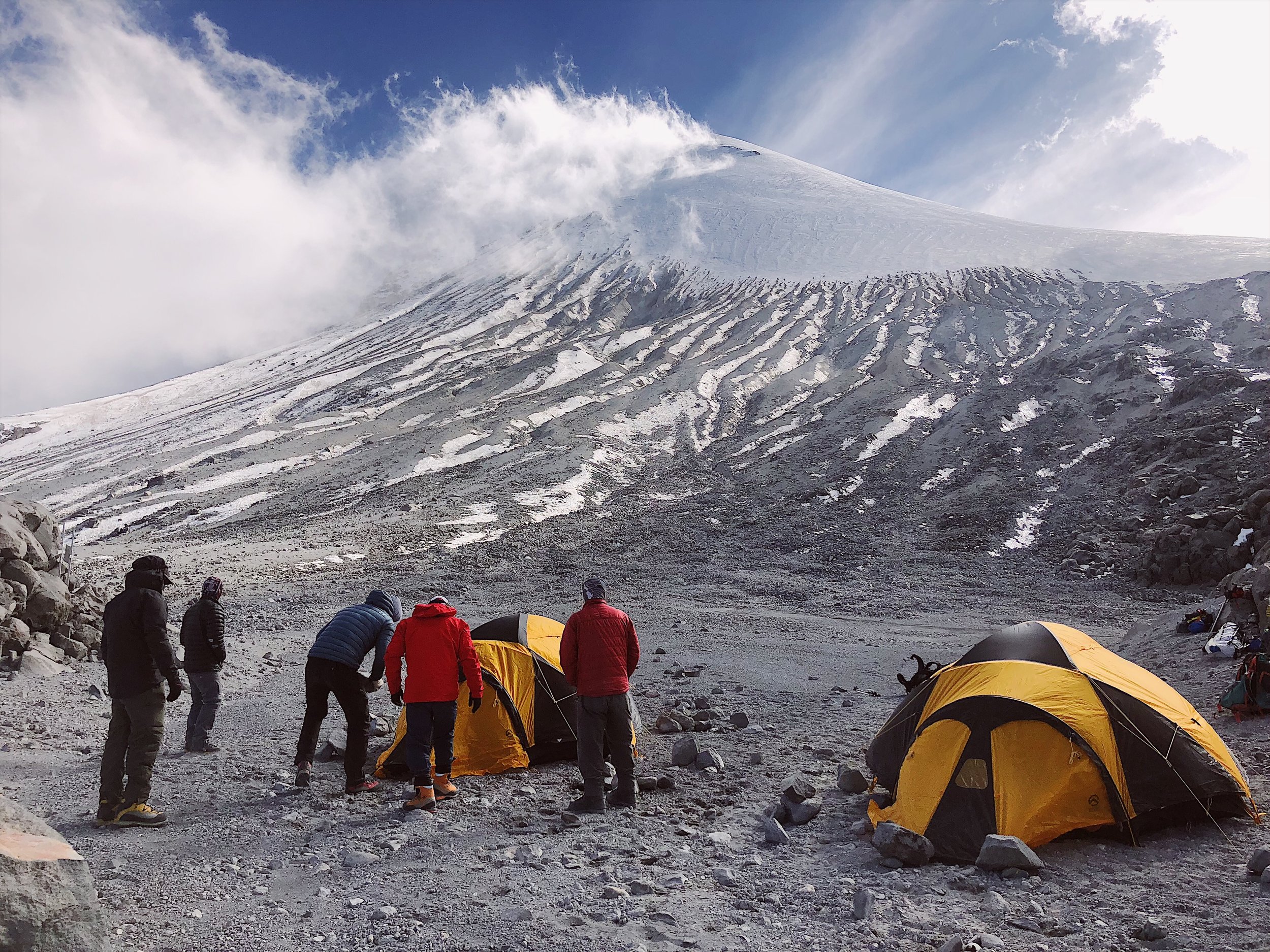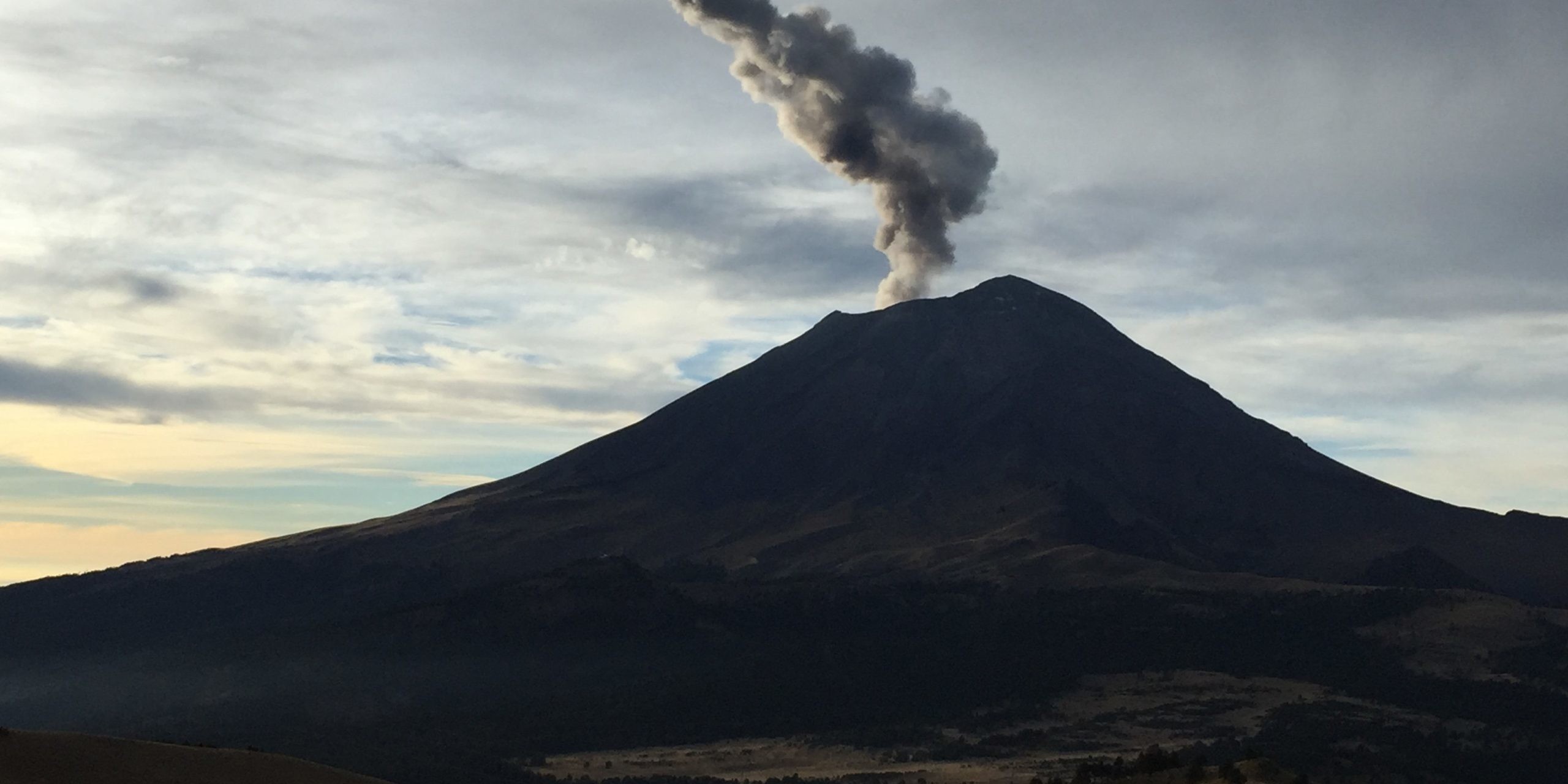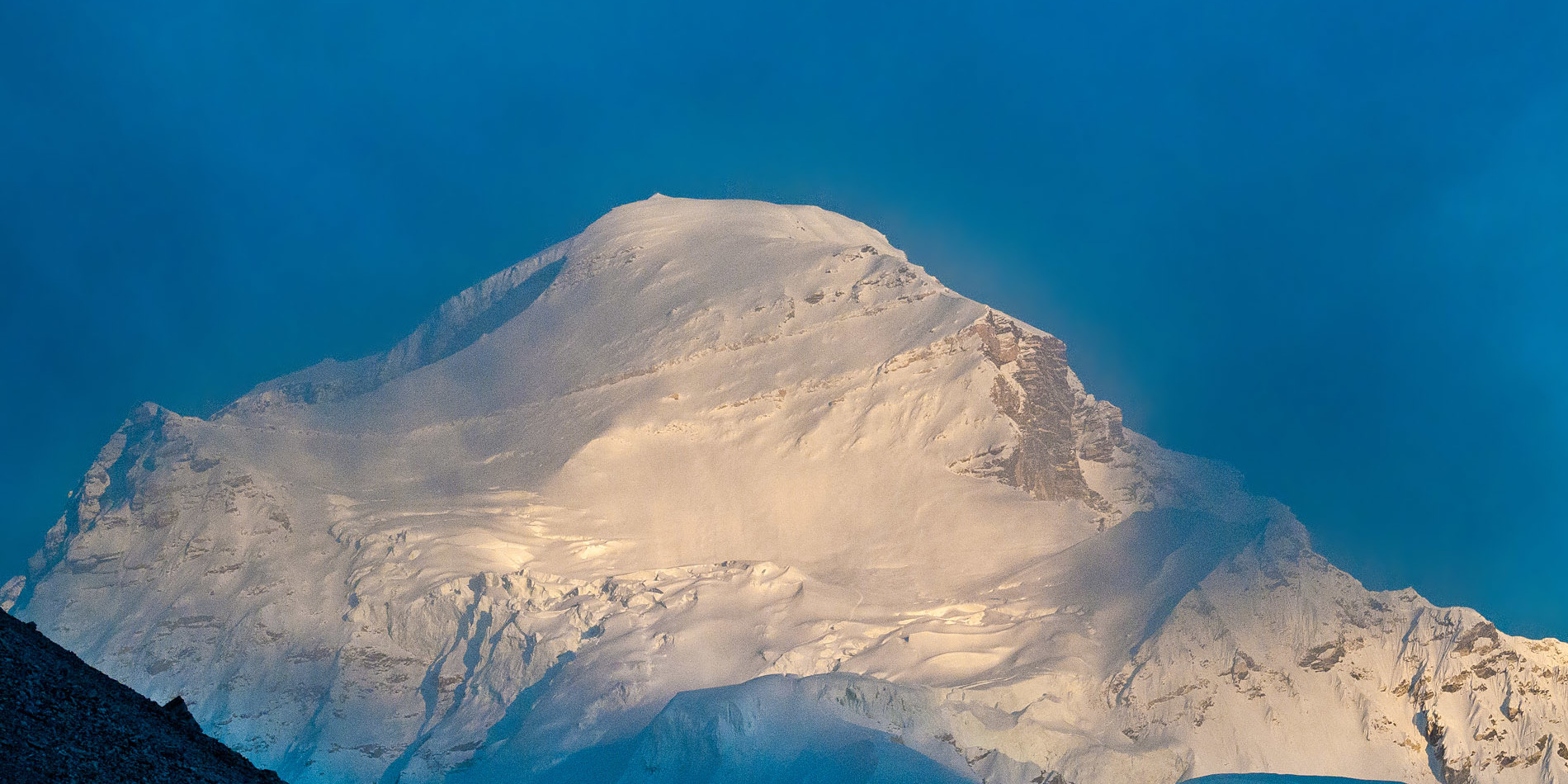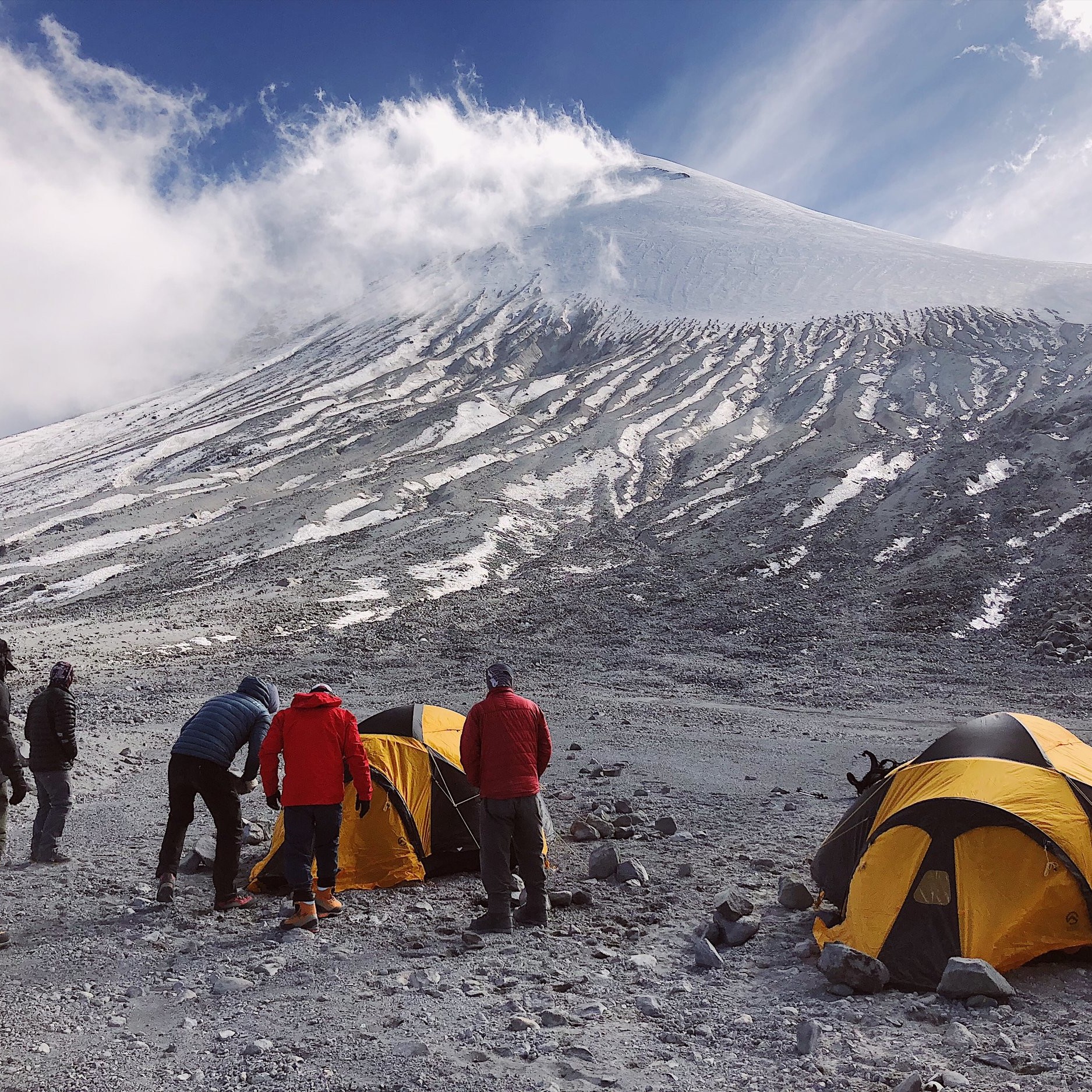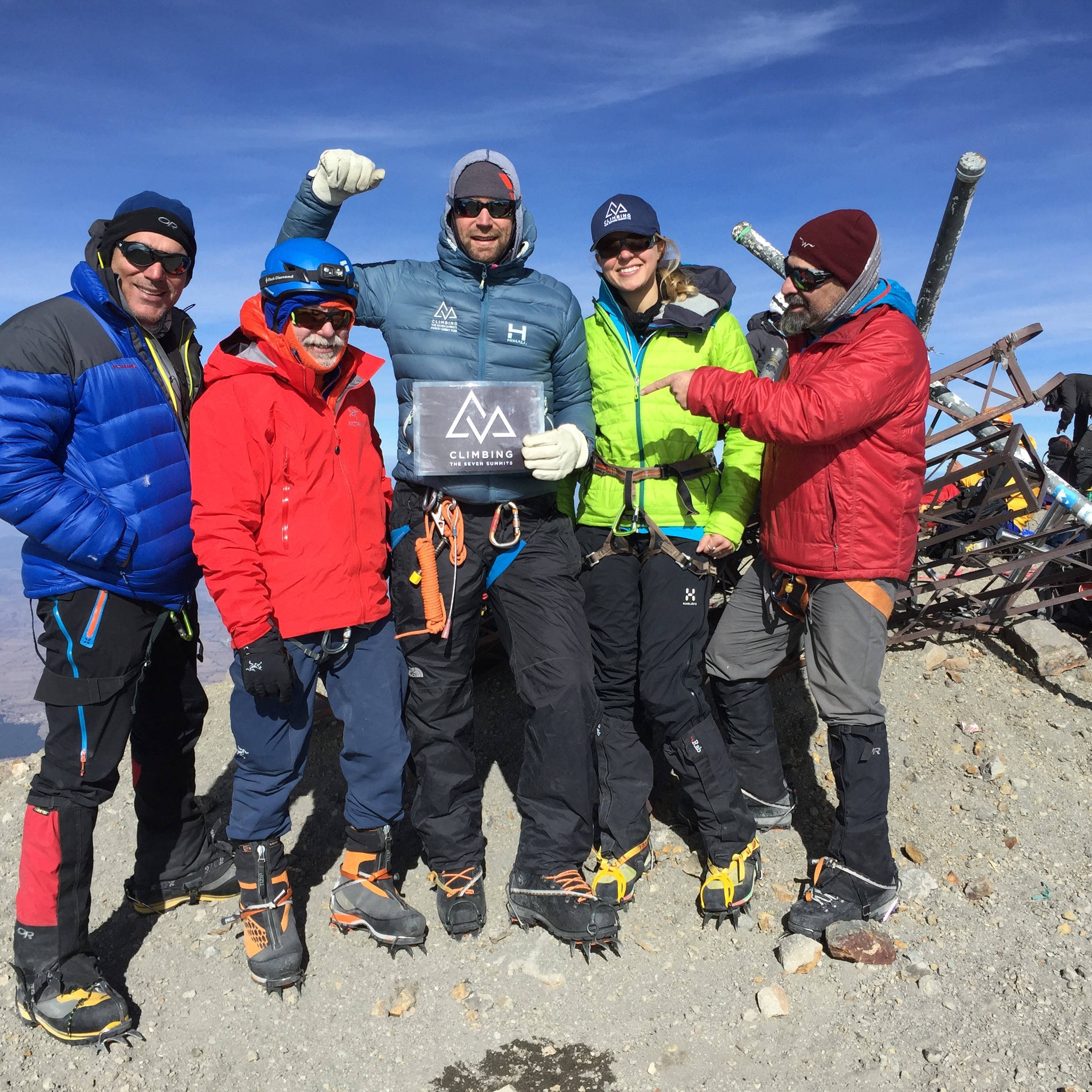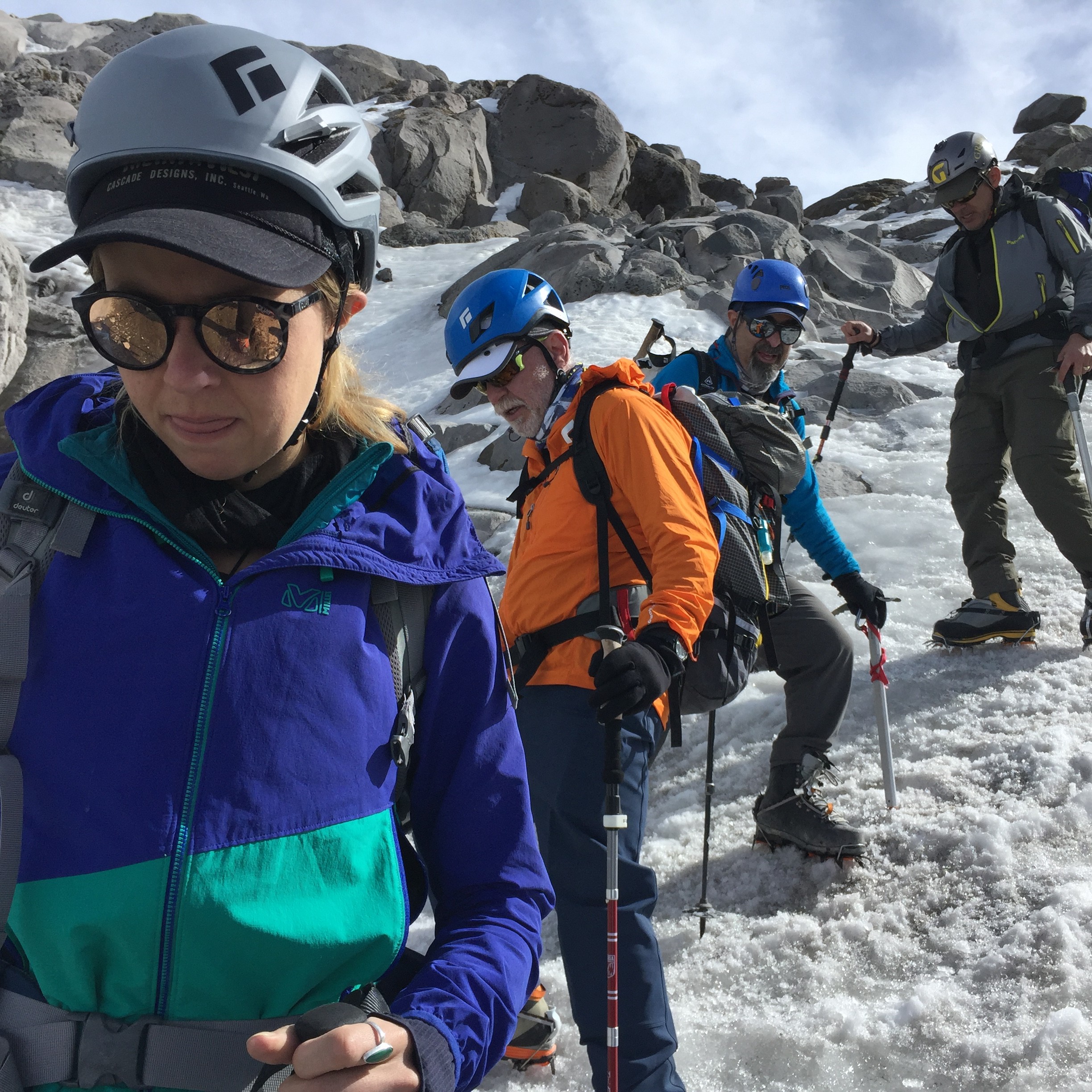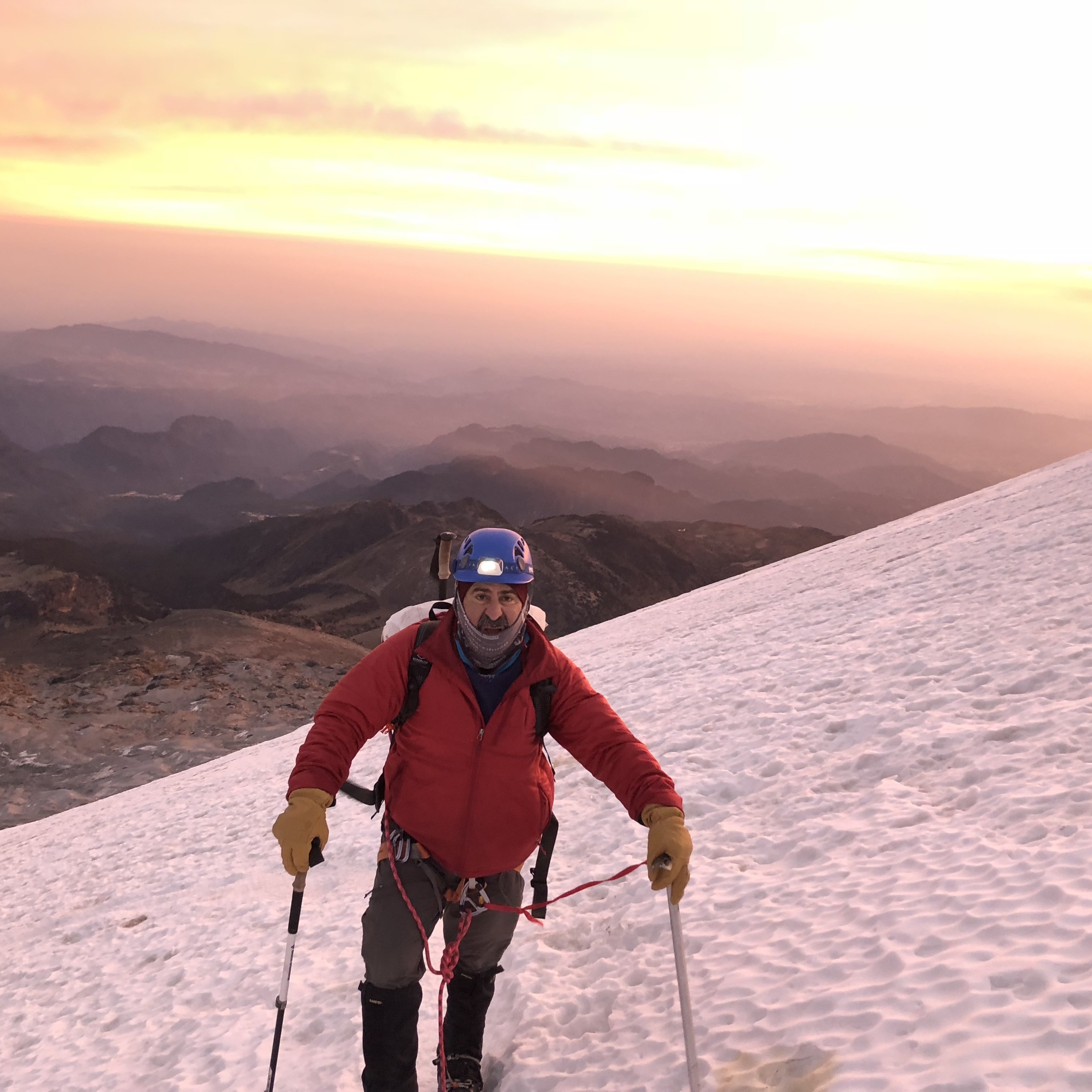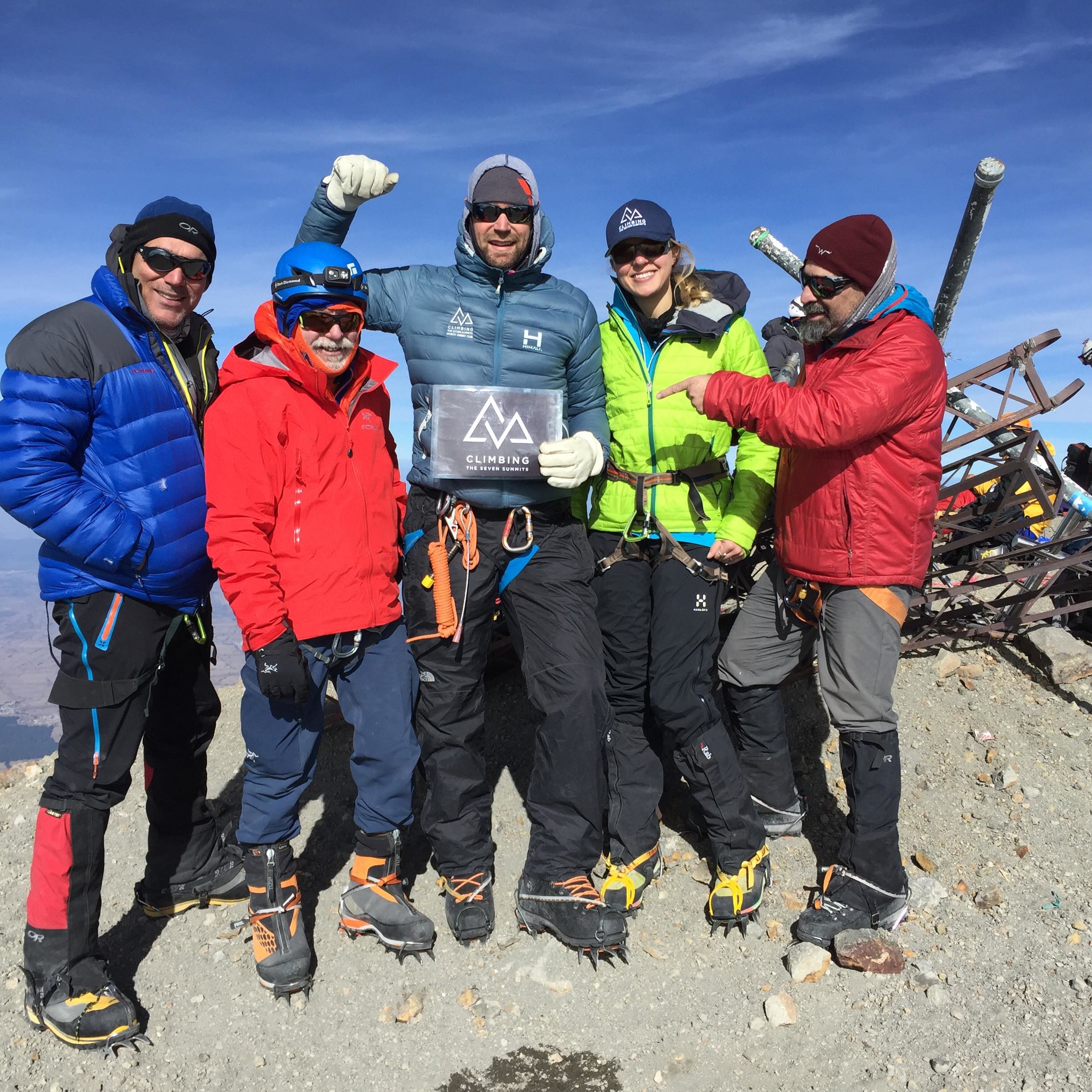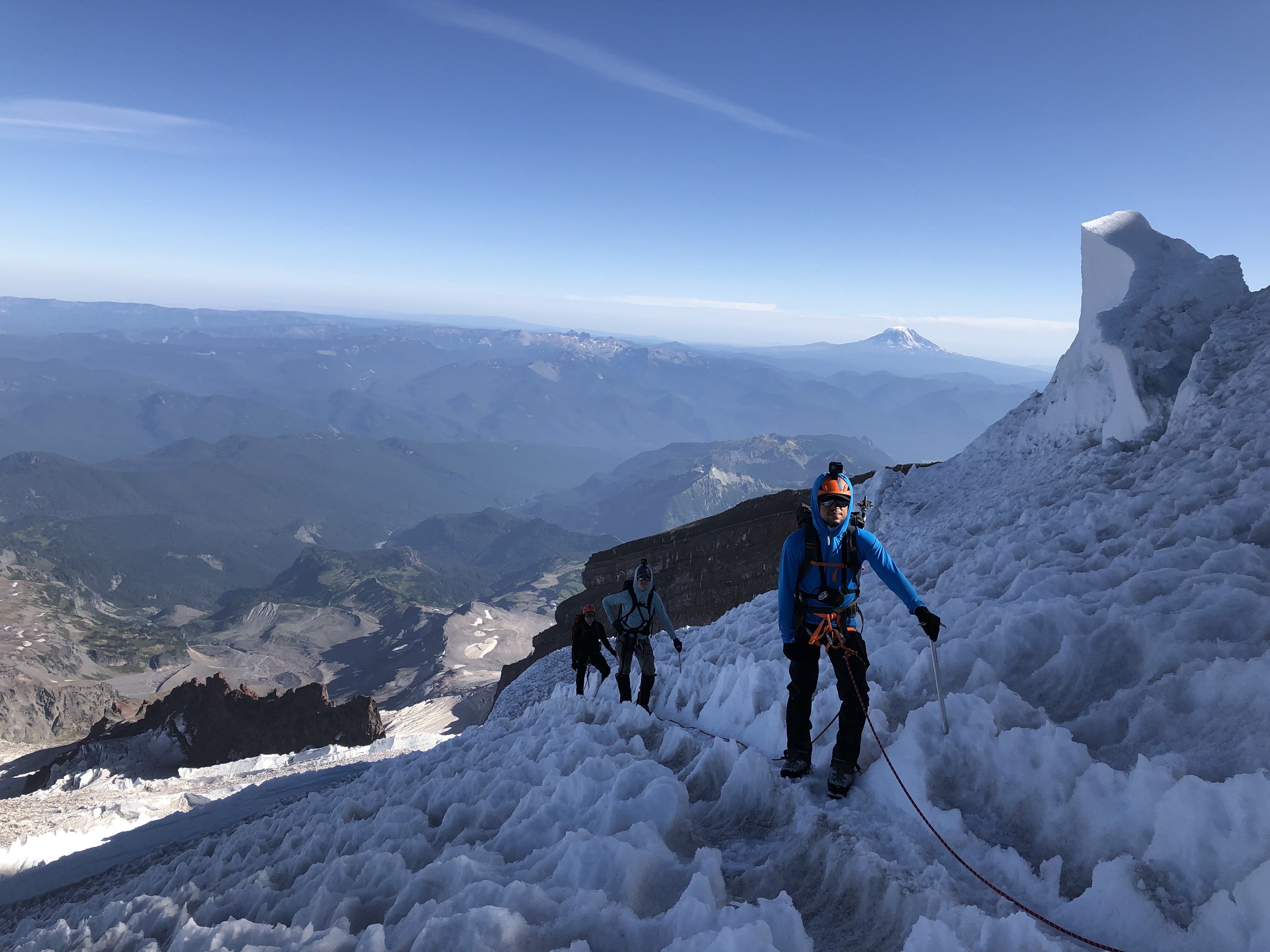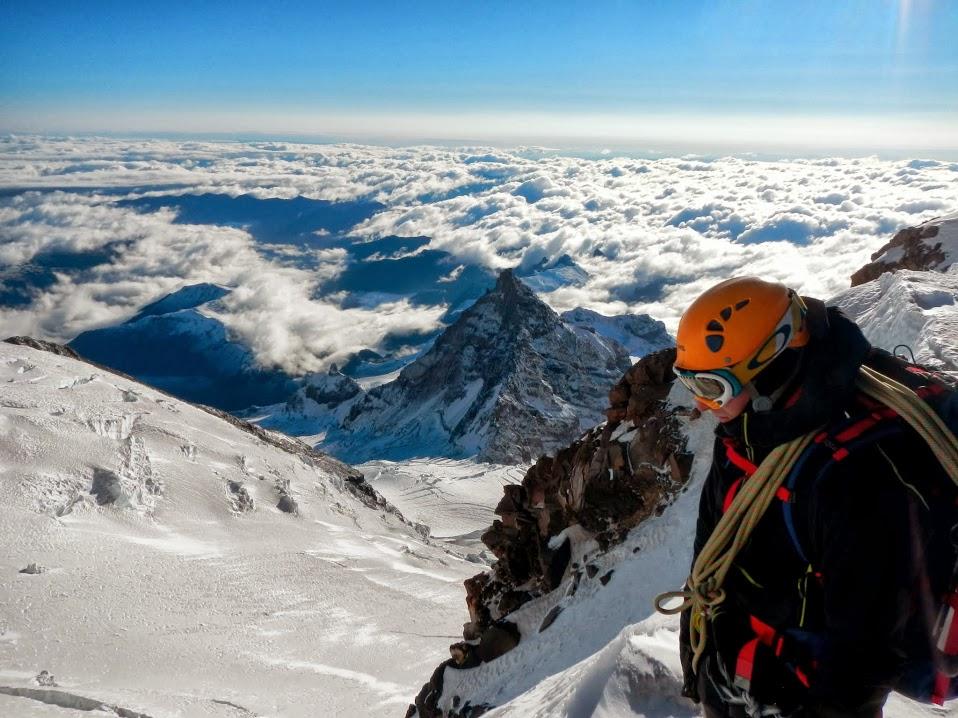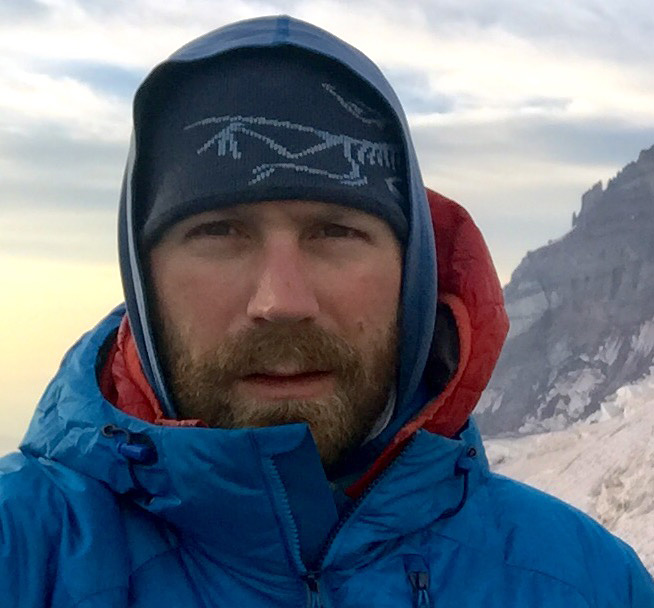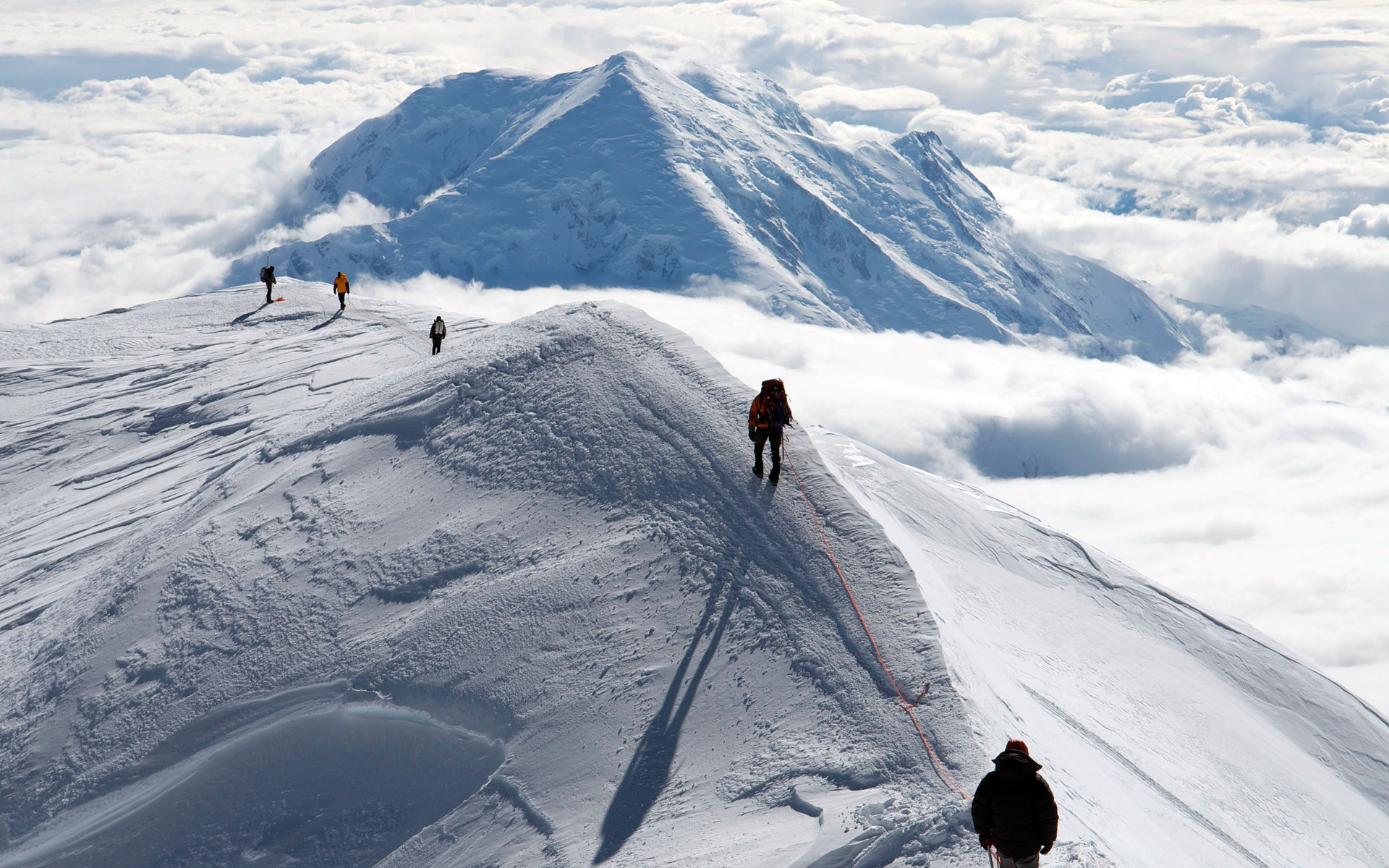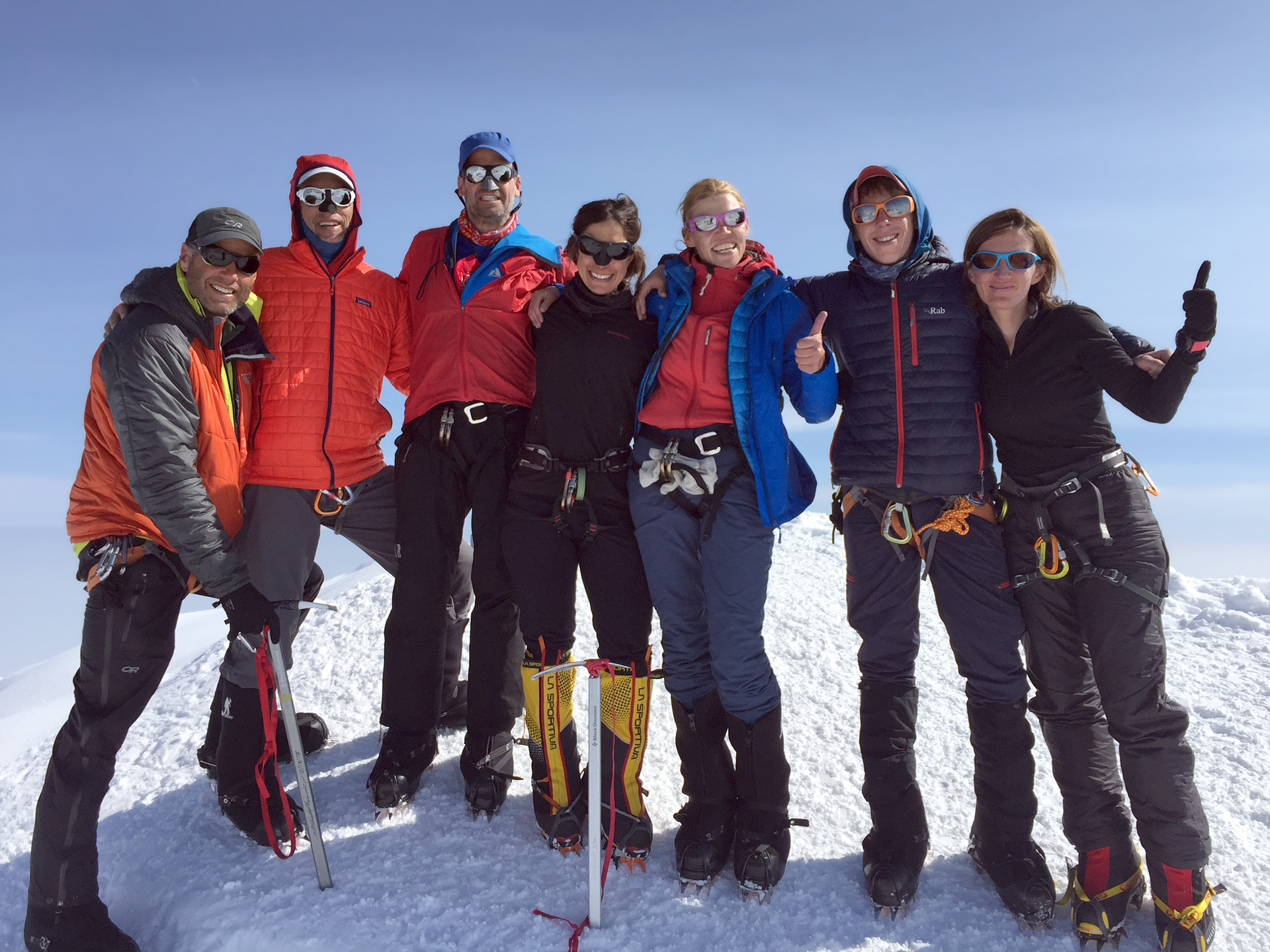Orizaba Single Room Option
Orizaba Single Rooming Option
$500 USD
We are happy to organize single rooming accommodations throughout the expedition for you. If you aren’t price sensitive, you snore or you are easily awakened by others that do snore this might be a great option.
We feel that having a single room helps climbers stay healthy and adds a bit of comfort and personal space that can go a long way. If you would like a single rooming option please let us know.
Please note that tent accommodations on the mountain are double-occupancy for safety and warmth.
Orizaba Speed Ascent
Orizaba Speed Ascent
N/A
With Private Guide and Hypoxic Pre-acclimatization Chamber
CTSS offers select climbers our “Speed Ascent” option which employs state-of-the-art technology to allow you to summit in less time. If you are short on time and want to make the round trip safely but as quickly as possible, this is the ideal option. We use a time-tested training program in conjunction with the use of a portable hypoxic altitude chamber to pre-acclimate your body to the rarefied air found at altitude. This option is perfect for those who want to minimize time away from home while still stacking the odds in their favor for summit success.
If you think this option may be right for you please contact us directly and we will work with you on a personalized plan to allow our “Speed Ascent” Program to maximize results for you.
This expedition provides a Private guide at a 1:1 ratio, logistical oversight by expedition leader Mike Hamill, logistics, food, team gear, and support for a summit attempt on Orizaba. Whether you’re a less experienced climber or have climbed at altitude many times before, our speed ascent private climb with 1:1 Private Guide will give you the best chance at standing on top of Orizaba in less time than the normal expedition.
CTSS requires clients to buy trip insurance for all expeditions. Please see our page on trip insurance and cancellation policy for more information.
All payments once submitted are non-refundable and non-transferable. If balances are not received by specified dates, the client forfeits their place on the program and any prior fees paid.
Mexico Volcanoes Private Climb
Mexico Volcanoes Private Climb
$11,950 USD
1:1 Client to Guide Ratio
Having your own private guide climbing with you can be an indispensable advantage! A private guide allows you to dictate the schedule, amend it depending on how you’re feeling, customize a program, and a private guide can coach you throughout the expedition, give you valuable feedback, be available if there are any medical issues, and make your climbing experience more enjoyable overall. Although summits a obviously never guaranteed but this is a great way to stack the odds in your favor.
All prices are in US Dollars.
CTSS requires clients to buy trip insurance for all expeditions. Please see our page on trip insurance and cancellation policy for more information.
All payments once submitted are non-refundable and non-transferable. If balances are not received by specified dates, the client forfeits their place on the program and any prior fees paid.
Orizaba Express Guided Climb
Orizaba Express Guided Climb
$3,495 USD
January 11th – January 19, 2021
This is our most popular option. This expedition is our traditional guided team climb which ascends the stunning Northern Route.
For a detailed overview of the trip from an objective source, have a read of this great article by mountaineer Laura Lisowski: https://www.releasetravel.com/blog/2019/1/25/climbing-orizaba-preparation-for-everest-with-los-authenticos
Provided are guidance, leadership, and expedition oversight by renowned expedition leader Mike Hamill, local guides, logistics, team gear, food, and support for a summit attempt on Orizaba. All prices are in US Dollars. CTSS requires clients to buy trip insurance for all expeditions. Please see our page on trip insurance and cancellation policy for more information.
All payments once submitted are non-refundable and non-transferable. If balances are not received by specified dates, the client forfeits their place on the program and any prior fees paid
_orizaba-express
ORIZABA | North America
Price Range:
$44,995 USD
Elevation:
29,029 ft / 8848 m
Duration:
69 Days
Difficulty:
Advanced
Route:
South Side
Share Expedition
The crown jewel of any climbing career, Everest is a transformative peak that is guaranteed to not just challenge you, but to change you.
Highlights:
- Discover what you are truly capable of
- Stand on the highest point of our planet.
- Experience the deep humility that climbing in the Himalaya evokes
- Enjoy lifelong friendships with your Sherpa and fellow climbers alike
Choosing the Right Option
Choosing the right service level is a decision based on your experience, desire for more supervision/personal attention or autonomy and that meets your budget can be tricky.
Essentially the greater level of experience you have, the more autonomy you can enjoy at a lower price point. As the level of Guidance increases, naturally so does the cost.
Here’s a good way to start:
Allowing you to customize your expedition to suit your needs is a huge priority for us.
As mountaineers ourselves we understand that it’s the little things that can make the difference. Comfortable, well rested climbers are successful climbers.
Whilst people often dismiss these Add On’s as indulgent luxuries, for many it’s Therefore we encourage you to tailor your expedition and talk to us about any other options you may wish for.
Nothing found.
CTSS prides itself on offering the best expedition at the best price and offering the best amenities that many of our competitors don’t. Scroll through the photos above to view our base camp set up. We have carefully worked through all of the details of our expedition to offer you every nuance that can help you be successful and comfortable and stripped our program of anything that could hinder you.
Some of the many amenities in just our base model climbs include:
- Accommodations at 5-star Hotel in Kathmandu
- Team jackets and hats for all Mt. Everest and Lhotse climbers
- The best food on Mt. Everest – think lemon crepes, fresh baked goods like croissants and cinnamon rolls, fresh fruit, vegetables, and meat weekly, hearty soups, chicken cordon blue, burgers, fresh salads, chocolate cake and puddings for dessert, etc
- A cappuccino machine with barista and cafe sitting area
- State-of-the-art oxygen systems to maximize your summit chances. Our oxygen system weight 4.5kg total as opposed to the much larger American oxygen system that weighs 8.5kg that some companies use. This 4kg/9lb difference make a
- HUGE difference on summit day when every ounce counts.
- The best weather forecasts money can buy sent to us daily to make sure you get the right weather window. Expedition leader Mike Hamill has been interpreting these forecasts for decades to great success.
- Unlimited 3rd party wifi for purchase at base camp.
- Acclimatization and refresher climb of Lobuche East peak to avoid one rotation through the rugged Khumbu glacier (except for our Speed Asecnt programs)
- Heating double-walled, custom built dining tents with wooden, insulated, and carpeted floors, and upholstered and padded chairs with armrests
- Insulted and heated Geodesic Hang Out Dome ‘The Big House’ with carpeted floors, lounges, a movie theatre, tables and chairs for doing work, and yoga space
- Four full-time cooks at Camp 2 to cook food for you while you’re in that camp.
- Dining tents with chairs and a toilet tents at Camp 2
- Hot towels infused with eucalyptus oil at dinner
- A solar array with backup generator for charging devices on international plug adapters
- The most well-trained and highest paid Sherpa on the mountain
- Large sleeping tents with lush 6” thick sleeping pads that insulate from the cold and a liner on the bottom of the tent to keep out dampness. And of course, a pillow (on the standard program)
- Hand wash stations with mirrors in both the foyer of the bathroom and the foyer of the dining room
- Accommodations at some of the nicest teahouses in the Khumbu Valley
- A communications tent with ample charging stations
- A wide array of healthy and nutritious upper mountain food and comfort food to suit a wide variety of palates.
- A dedicated storage tent to keep your climbing gear and extra gear so you have more room in your tent
- Two-room toilet tents (one room for hand washing) with sit down toilets
- Hot showers with two rooms: one for changing and one for showering
- Choose our Everest Executive or Everest Associate option for many more creature comforts…
How early should I commit to my climb?
We feel that the sooner you commit the better as it gives you more time to prepare mentally and physically for the climb. Climbing Everest is a huge undertaking and something that you will want to work up to consistently. I have found that people are generally more successful when they commit earlier as it gives them longer to shake out any problems that may arise, arrange their home and work life to be away for a number of months, and build their fitness endurance and strength up over time and thereby avoid injury etc.
What’s the best climb to prepare for Everest?
Hands down I think that Cho Oyu is the best, most specific Everest prep. You get an understanding of how your body does at altitudes over 8000m and get familiar with the oxygen system and climbing with the Sherpa.
Will I need to purchase insurance?
Yes, trip insurance is required for this program and it needs to cover the entire cost of the trip and include trip cancellation, trip interruption, medical expenses, repatriation, and evacuation for the entire length of the expedition.
Trekkers are required to have the same coverage. Unforeseen hiccups are part of adventure travel both before and during the expedition and it can be very expensive. Every effort should be taken to account for them in advance. Please forward a copy of your insurance for our records so that we can help you in the event that it need to be used during the expedition. Most insurers require us to contact them immediately.
For more information on trip insurance please visit the “Trip Insurance” page on the website.
Why do you choose to climb from the south side?
I prefer the South side of Everest for a number of reasons. While people think avoiding the icefall means a safer climb, I beg to differ. The South side has a lot more infrastructure which means there are more assurances including helicopter access, the HRA (Himalayan Rescue Association) medical clinic manned with speciality trained doctors 24/7 at base camp. If something goes wrong, we have much higher chances of evacuating you and getting you to a hospital in Kathmandu within hours, whereas if something were to go wrong on the North Side, it could take days for a rescue and evacuation to be completed and to get you to the nearest hospital. The North side is also a more hostile environment being windier, drier and dustier. Further, the border to Tibet has often been closed to climbers on very short notice over the last 10 years.
What program upgrades are available?
The main add-ons for the Everest programs are extra oxygen, the Everest Executive Option (upgraded tent accommodation, single supplement etc) single rooms upgrades and/or deluxe rooms in the trekking lodges. If you are climbing Everest you may choose to add on an ascent of Lhotse. Please discuss these add-ons with us and we can help you decide if they are right for you.
It’s a long time away from home – can my family and friends join me?
Yes, your family and friends are more than welcome to join us on the trek in to base camp and even climb Lobuche peak if they like. (Our standard treks stay a 2 nights in Base Camp before departing but we have had people stay longer and this can be arranged by chatting to us directly) Please let us know immediately if you have people who want to join us so that we can make arrangements for them. Space in hotels in Kathmandu and in the teahouses is limited during climbing season so we need to know final numbers asap!
What’s the deal with extra oxygen?
We give you plenty of oxygen to run a comfortable oxygen flow (3L/min or so) throughout the climb. As standard we give you 10 bottles (7 for your and 3 for your Sherpa). If you would like extra oxygen we encourage your decision and are happy to arrange an additional 3 bottles. With the extra Os you can run high flow (4 – 5L/min) throughout summit day, start oxygen at Camp 2, and have a bit extra in case of delays at the South Col etc. Extra oxygen can help keep you warmer and moving faster so it’s a great safety margin. You certainly don’t need the extra oxygen but I’ve always seen it as a good on-mountain insurance policy as such.
Will we be taught how to use the oxygen systems?
Top quality, reliable oxygen tanks, masks and regulators will be provided for you on your climb and we will go through their usage in depth at base camp so you can practice before your climb. We typically use oxygen from Camp 3 (roughly 24,500ft) to sleep & climb on to the summit. If you are interested in extra oxygen to use from C2 (roughly 23,000ft) on the summit bid and to run a higher flow rate on summit day please let us know in advance and we can arrange this.
What’s the acclimatization process?
Our entire expedition including the trip to base camp is slow in order to allow our bodies ample time to acclimate. In the Khumbu, we gaining altitude quickly and this slow process will allow us to acclimate properly and avoid altitude sickness. That means there is plenty of down time while your body adjusts. Please bring a few books or movies on your devices and be patient. This is a slow process but it will give you a much better chance at success on the climb and trek. Make sure to communicate with your guides directly if you are experiencing any altitude issues.
How much cash should I bring?
It is better to have more money than you need than not enough, while most things are covered on the trip once you land in Kathmandu (check what’s included/what’s not included list for details) you will still need cash. The cash that you need to bring includes money for visas ($100 for 1 single entry 90 day), Sherpa tip pool ($600 for climbers and $300 for trekkers), money for staff tips (customary but optional) $200 for potential consultation and treatment by the doctors at base camp, $500 to cover expenses for a potential early departure (not often, but sometimes this occurs) and $1,500 – $5,000 if you think you’ll want a helicopter ride out, $300 for miscellaneous expenses like non-group meals, shopping, drinks around Kathmandu and while on the trip to base camp if you want wifi, sodas, specialty coffees, bottled water, charging of devices or snacks (meals are covered), Generally we recommend bringing $2,000 – $3,000 USD plus a credit card to cover all potential expenses including an early departure but it is unlikely that you will need all of this. Small denominations (1’s, 5’s, 10’s and 20’s) are better and although American dollars are accepted, you can change money into Nepali rupees at change houses when you arrive. Rates are generally about the same and I’ve never encountered one that isn’t legitimate. Also, there are now quite a few ATM’s around town where you can use your card to take out local cash at a good rate. It is much more difficult to change money, especially large sums, once in the Khumbu Valley. Please let your credit card company know you will be traveling so you can use your card (and not set off the fraud alert due to using the card in a foreign country)
How much gear can I bring?
We pay for yak + porter transport for two 50lb duffels (1x trekking duffel which will travel with you and 1x climbing duffel which will go straight to base camp) this should be more than enough weight. If you want toto bring more than this with you, you will be expected to pay for the excess weight. This amount will include excess on the flight to Lukla and then be roughly $300/duffel each way to base camp beyond the two duffel allotments. Transport is getting more expensive every year so please leave the kitchen sink at home! (we already have those at base camp) Just bring what you need to be comfortable but not more than that.
What immunizations do I need?
Make sure your immunizations are up to date. Consult your doctor, local travel clinic, or the Centers for Disease Control (CDC) for updated information on immunizations for Nepal and China. Recommended immunizations include diphtheria-tetanus (DPT), polio, mumps-measles-rubella (MMR), meningitis, hepatitis A and B, cholera and typhoid, and rabies. Malaria shouldn’t be a problem in Kathmandu or on the climb. If you plan to travel to lower-elevation areas in Nepal before or after the climb, you should consider malaria chemoprophylaxis.
How should I pack?
For the trip to base camp climbers will need to pack in two separate duffels: a base camp duffel and a trekking duffel. Climber’s base camp duffel will not be accessible while on the trek to Lobuche en route to base camp and should contain all of your climbing gear (crampons, axes, down suit etc) and items you won’t need until Lobuche. Your trekking duffel will contain everything you will need for the trip to base camp including your trekking gear, rain gear, street clothes, and a light sleeping bag. Trekkers will have everything with them in one duffel. Please keep everything you will need with you such as medications and medical supplies. What will go in your trekking and base camp duffels will be covered in more detail in Kathmandu. Pack an additional small lightweight duffel in your luggage to leave street, travel clothes and things you won’t need on the expedition at the hotel in Kathmandu
What is the food like on the climb?
At Base Camp CTSS has the best chefs and food, hands down. Our teams are consistently blown away by the quality of food and hygiene at base camp considering where we are in the world. Our head chef trains at 5 star restaurants during the off season. Think lemon crepes, cheese omelettes, chicken cordon bleu, pizza, fresh fruit almost daily, fresh salads, steaks, apple pie, fresh croissants and cinnamon rolls, and moist chocolate cake. We get shipments of fresh meat, fruit, vegetable, and other supplies weekly. Dave Hahn, non-Sherpa Everest summit record holder with 15 summits said about our head chef Kumar, “A real pro. Kumar is the reason I kept climbing in the Himalayas as long as I did.”
Why do I need to bring my own snacks?
We do a big Costco run for group snack and meal food for the mountain and will have lots of good stuff but we want to make sure everyone has the food that they need. Even people who aren’t usually picky about food can get really particular about what they can digest on Everest due to the extreme altitude and getting lots of calories is hugely important. Gu packs, shot blocks, nuts, Snickers bars, cheese, etc… whatever it is that you know you can eat when you don’t want to eat anything is best. Getting speciality and familiar food can be difficult in Nepal so it’s best you bring what you love from home. Also, bring a good supply of cough drops or hard candy as you might like them in the dry air. We’ll have some for the team but people seem to go through them really quickly.
How safe is the food and water?
As in Kathmandu, once on the trail in to base camp it is highly recommended that you stick to treated rather than tap water. Properly boiled water is available in all the teahouses and bottled water is readily available in stores en route but to reduce the amount of trash and pollution in the valley we encourage you buying boiled or UV treated water from teahouses. You can also bring your own water treatment solution. We will provide some teas and coffees at meal times but if you want sodas, bottled waters, specialty coffees, or drinks outside of meal times we ask that you purchase them yourself. Nepal isn’t known for its cuisine. The food on the trek to base camp can become a bit monotonous but it’s energy dense and fufilling. Asian inspired, there is a lot of fried rice, rice based meals, soups, omlettes etc. Stick to meals where the food is obviously local and sourced from the valley. We stay in reputable teahouses who have a good understanding of food hygiene so our climbers and trekkers rarely get sick. It’s ok and somewhat expected to get a slightly upset tummy as you’ll be eating food that is different to what you are used to. At Base Camp, we have our own chefs who are incredible and take every precaution, in a full catering kitchen. They also cook Western foods, have fresh food including fruit, vegetables and meat resupplied regularly and serve a good variety. CTSS is known to have the best food on the mountain and given where in the world we are, that’s a remarkable feat.
What’s the accommodation at Base Camp like?
We use North Face VE-25 tents. They’re large, spacious (the same size as a 3 man tent) and extremely high quality. Inside you will have a thick, comfortable 15cm sleeping mattress and a pillow. This is placed on top of a ground cloth to keep out the wet and cold. We do offer a heated double roomed tent under our Everest executive program. To avoid you overcrowding your tent, there is a separate gear tent where you may store your climbing equipment.
Will I be sharing a tent?
No, for the majority of the climb you are not sharing a tent. We stay at the famous “Yak and Yeti” hotel in Kathmandu and in the finest teahouses while trekking to base camp. While at Everest base camp you will have your own tent to spread your gear out and call home. There will be times on the mountain where you will need to share a tent with another climber to reduce the number of dangerous loads the Sherpa need to carry through the treacherous Khumbu Ice fall. It’s also a lot warmer and safer when you can keep an eye on each other.
What about phones & wifi?
We understand it’s important to stay in touch with friends and family and on top of your inbox. There are a number of ways to do this;
We suggest picking up a local Ncell sim card in Kathmandu with a data package. Signal is reliable in Kathmandu & for most of the trek up the Khumbu valley it is strong enough to support both calls and data. Once you get to base camp cell service becomes unreliable, although it can sometimes pick up a low signal (not enough to support data). You can buy a local Ncell sim card in Kathmandu and there is a Ncell store close to our hotel that we are happy to show. Your phone will need to be unlocked and you will need your passport to get a sim card. You can get recharge cards almost anywhere. This is by far the most affordable way of staying connected and getting data in the Khumbu valley up until base camp. If you’d like to use your own sim card, talk to your provider about activating your international roaming and you should be able to tie into the local networks. At base camp, when the cell service runs out, you can connect to the wifi network and make calls on facetime, Whatsapp, FB, or Skype. It is available for individual purchase which means you only pay for what you use. Please note, this is operated by a third party and we have no control over whether it works or the expense. There are also internet cafes in the bigger towns along the route to base camp to get online and third-party wifi available for purchase in most of the teahouses. Please keep devices like laptops, smartphones and iPads waterproofed in your trekking packs so they don’t break in your duffels. You will be responsible for your own valuables. There will be a satellite phone with the team but we don’t expect to use it until above base camp. It can be made available to team members at $3/minute. If you plan on bringing your own satellite phone with you, you are required to register it with Nepal which costs thousands of dollars. Should you choose not to register it and use it anyway, you do so at your own risk.
How heavy will my pack be?
In general, climbing packs on Mt. Everest are relatively light. You will likely be carrying 15lbs – 30lbs (7kg – 12kg) most of the time while climbing and less on the trek into base camp. While climbing you should be prepared to carry your gear for the day and some of your personal gear for the mountain. Sherpa will carry all of the group gear and help with personal gear where possible.
How do I charge my devices?
Given the local expense of electricity, teahouses charge you to repower and recharge your electronic devices en route to base camp. This tends to get more expensive up the valley and a portable battery pack is a good idea. You will need to bring an adapter. This cost is your own expense. Once at Base Camp we will have power and power cords that fit North American plugs. Charging is dependent upon the sun or fuel for the generator so it won’t be available all the time but we will try to make it available enough to meet your need.
I’d like my own room in hotels & teahouses…
All hotels and teahouses are double or triple occupancy but once we get to base camp you will have your own tent to spread out in. If you want single rooms en route to base camp, we can arrange this at an additional cost. Sometimes teahouses are full during the climbing season and may not have room to accommodate single rooms so please let us know as early as possible for the best chance of us securing a private room. Again this is adventure travel and we ask you to roll with the punches if they are not available.
Do I need a visa? How do I navigate Kathmandu airport arrivals?
Often just getting to Nepal can be the hardest part. Once you’re on the ground it’s time to relax. Upon exiting the plane walk to the left of the customs area and have your passport, photo, money, and visa form handy. You must pay for your visa first at the desk straight ahead and to the left before getting in the “Visa Upon Entry” line (far left of the large room). Purchase the a 90 day for Everest and Lhotse climbers or the 30 day visa for trekkers and Lobuche climbers single entry Nepali visa.
http://www.nepalimmigration.gov.np/page/visa-on-arrival
In the Khumbu, what’s not included?
We cover almost everything in the cost of the trip once we fly into the Khumbu valley so there shouldn’t be too many other expenses that you need to worry about. The biggest expense is tips. The Sherpa tip pool is $600 and I will collect that at the beginning on the climb to disperse amongst the entire team at the end of the climb including cook staff and dining staff. People sometimes tip their individual summit Sherpa a bit more than this and it seems like people have been tipping their guide about 1k-2k on the Western Guided option. The other personal expenses people accrue are wifi (through third party operators) additional personal snacks, drinking, charging of devices & toilet paper. We suggest you bring a portable charger and pack a few additional rolls of toilet paper for the trek in.
What if we can’t get into Lukla in time because of weather?
It’s good to remember that we are in the Himalaya and weather can be variable so it’s important to be patient. Generally, it’s no more than a day or two delay. If it looks like we’ll be unable to get in on the plane then we’ll look at hiring helicopters to get into a safe spot in the valley to stay on schedule.
What’s the deal with blog updates?
We know family and friends will want to follow your progress so we will be posting regular updates to the Climbing the Seven Summits blog here: https://climbingthesevensummits.com/blog/ We try to update it as often as possible but make sure your loved ones know that ‘no news is good news’. If a few days pass between updates it doesn’t mean that anything is wrong, simply that we are probably busy climbing.
We also offer partial climbs to build your Himalayan experience or have friends and family join you on your Mt. Everest expedition. These stand-alone options allow new members to join our Everest team for various parts of the expedition for instance joining us on the trek into Base Camp, our Lobuche climb, tackling the famous Khumbu Icefall up to either Camp 2 or Camp 3, or even climbing the world’s 4th tallest mountain in the world, Lhotse.
Need More Experience?
Consider these expeditions
Testimonials
Kind, inspiring, courteous, strong and always smiling. There are truly no words I can write that do him justice. I look forward to more climbs with Tendi in the future.Peter W
CTSS is a class act! The team and facilities are world class. Every detail of the expedition was perfect. Mike’s decision making, Tendi’s guidance, the strength of our Sherpa team and the food Kumar was producing were second to none. You only had to see the look on the faces of team members from other operators…to know we had something special. I can’t wait to climb with CTSS again.Peter W
I had the pleasure of being guided by Tendi Sherpa, the most humble and respected individual on Mt. Everest. Tendi is famous in Nepal and widely regarded as one of the top three Sherpa. I have never met a more positive individual in my life, his laugh and smile are a permanent smile from Kathmandu airport to the roof of the world and back. During the 6 weeks we spent climbing together, he never once overlooked a clip, anchor or footstep. I can confidently say there is no safer way of climbing the tallest mountain in the world than by having Tendi by your side. With twelve Everest summits and perfect english, Tendi is like a Western guide on steroids. My favourite analogy was when I was told ‘Tendi could climb faster without oxygen and with me on his back, than I could running 6 litres per minute of oxygen” And it’s true! If you are going to take the time to climb Everest there’s no better way to stack the odds in your favour than climbing with Tendi Sherpa as your guideMat Wood – Dual Everest and Lhotse summiteer in under 24 hours
Tendi Sherpa – a truly amazing person and an inspirational leader… It is plain to see that the leaders of the other guiding companies hold him in the highest regard. As a client that gives you great confidence in your leader’s decision making. It was that decision making that made it such a successful trip. Thank you Tendi.Richard W
After doing research on the various Everest mountaineering guide companies, I could find no reason to use anyone other than Climbing The Seven Summits. Now that I’ve returned from a successful summit of Mt. Everest with CTSS, I would highly recommend them to any climber, for any summit in the world. CTSS provides an unparalleled level of guide expertise, and very experienced Sherpa support staff, as well as exceptional accommodations and sustenance. All of this, at very competitive pricing, with different levels of service available, depending on the climber’s experience. Mike Hamill has the highest level of integrity and mountaineering expertise, constantly adapting to the needs of the team members, as well as the changes on the mountain. CTSS has significantly raised the bar in the mountaineering world – and all the other companies know it.William B, (USA)
Mt. Rainier
Mount Rainier
Difficulty Level: Beginner, Intermediate, Advanced
Mount Rainier is a fantastic climbing experience for all types of climbers – beginner, intermediate and developed mountaineers! Mt. Rainier’s 14,411-foot (4,392 meters) summit is the highest point in Washington State and 5th tallest in the lower 48. Mount Rainier is solitary and dominates the south eastern view in most of the Seattle-Tacoma area. This is a great trip for anyone with a small adventure time frame, but also interested in adding a significant mountain to their climbing resume.
Mount Rainier has 3 peaks, with Columbia Crest being the highest, and the true summit. There are several popular routes to the summit of Mount Rainier, each varying in difficulty and technicality. The two most common routes are the Disappointment Cleaver Route and the Emmons-Winthrop Route. The Disappointment Cleaver Route is the route our teams use. This challenging but manageable ascent features glaciated terrain, deep crevasses, and steep sections.
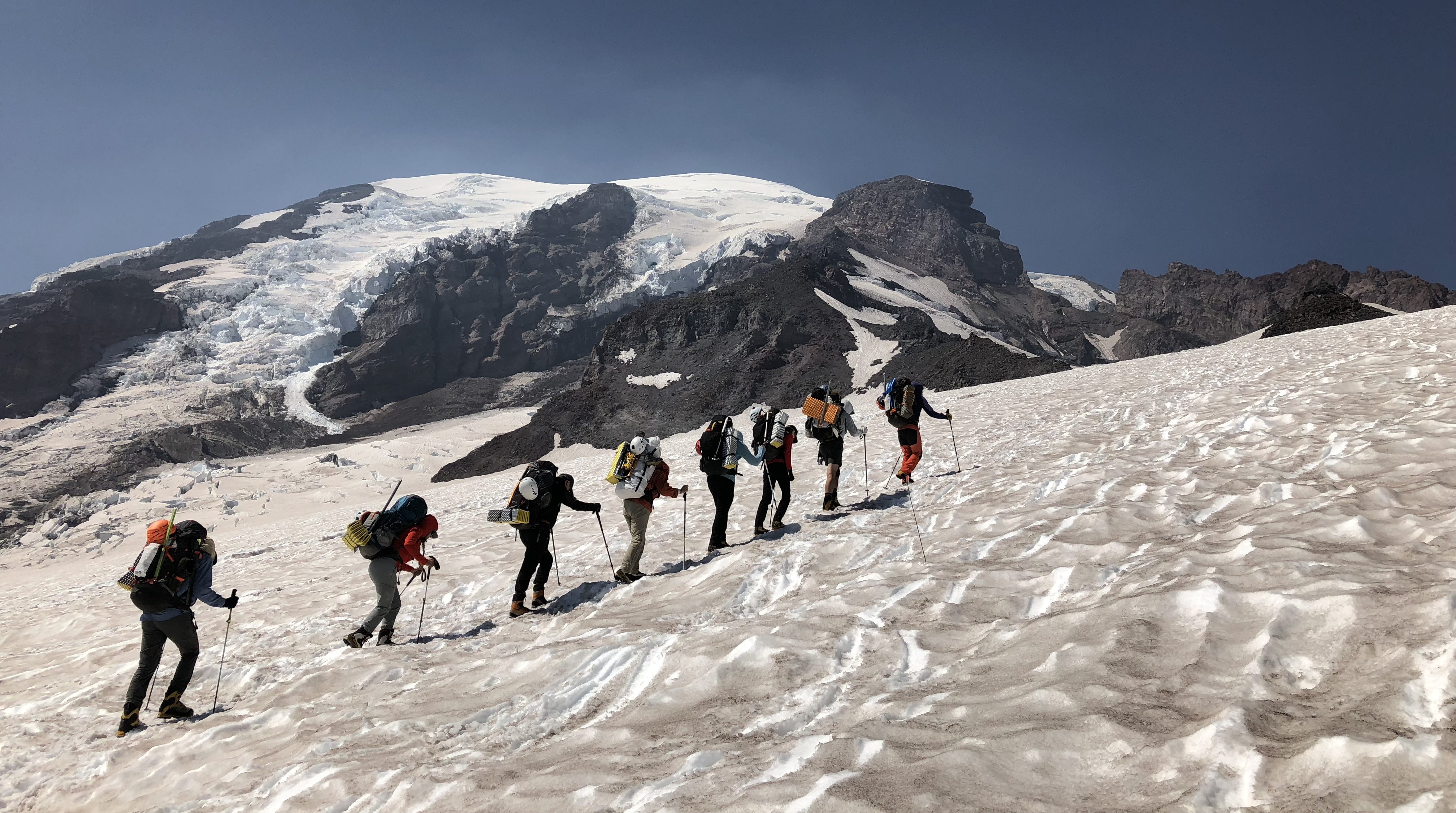
Expedition Highlights:
- Climb one of the most aesthetic peaks in the world
- Experience the largest glacier in the contiguous lower 48
- Gain technical experience but in an accessible urban setting
- Spend a full day honing your skills with our Snow School
- Navigate heavily glaciated terrain with crevasses and icefalls
- Climb an active volcano (at rest!)
Mt. Rainier offers a range of approaches with changeable grades of technical difficulty for climbers. Climbing the Seven Summits utilizes the Disappointment Cleaver Route. Climbers begin at Paradise (5,400 feet) and climb up to Camp Muir (10,060 feet), which is also used by backpackers and day hikers. At Camp Muir you will have the impressive view of Little Tahoma (11,138 feet, 3,395 meters) which has eroded itself into its own peak from the historical and earlier Mt. Rainier of the past.
Climbing Mt. Rainier, you are increasing your knowledge and training of learning snow, ice and glacial skill climbing, which is why it is great for beginner climbers, as well as a great refresher for more seasoned climbers. The Disappointment Cleaver Route is considered to be one of the lesser technical routes on the mountain. During your Mt. Rainier trip with Climbing the Seven Summits, you will learn more skills to add to your climbing repertoire, as well as adding to your climbing resume. On your second day of the trip you will be a part of the CTSS Snow School and Training day. The skills you may learn include use of ice axe and crampons, self-arrest rescue techniques, and communication skills while traveling with a rope team.
Climbing the Seven Summits is committed to providing the highest quality Mt. Rainier expedition. You can be assured that it will be both challenging and fun, a true once in a lifetime experience. Rest assured that our professional priorities are first and foremost “Safety” and “Success” which we achieve by outfitting our teams with the best logistics and the most capable, qualified and seasoned guides in the world. The third day, your group will climb up 1,000 feet to Ingraham Flats camp, which is a much more natural camp setting, surrounded by crevasses and large, expansive views of the surrounding glaciers.
That night, depending on safety and weather checks by our professional mountain guides, the team’s summit attempt will occur. Above Ingraham Flats, the climbing intensity, steepness and endurance increases. The upper mountain climbing route varies day to day, as crevasses open up and snow bridges form throughout the season. While this is a challenging peak, our Mt. Rainier program is designed to see you succeed.
Welcome to “Climbing the Seven Summits” Mt. Rainier Expedition!
Having spent most of my life as a resident of Seattle, Rainier feels like my home peak having spent many summers on the mountain accumulating over 50 summits.
Rainier truly offers some of the best climbing in the US, with ‘big mountain terrain’ in the Lower 48. It’s a peak that makes you feel like you may be in the Himalaya or the Alaskan range whilst still being a stone’s throw from Seattle. Unlike bigger international trips with lengthy approaches, it can be achieved in a few short days.
Our Rainier program offers great bang for your buck to get that big mountain experience without a huge investment of money or time.
I look forward to sharing a piece of my backyard in the Pacific Northwest.
Best regards,
Mike Hamill
Owner and Lead Guide, Climbing the Seven Summits
Expedition Options (Schedule & Prices)
Mt. Rainier Guided Team Climb: $1,995 (4.5 day | 3 Nights)
Climbing Trip Dates: Please contact us for upcoming dates.
This Mt. Rainier expedition is our traditional guided team climb which ascends the mountain by utilizing the Disappointment Cleaver route. Provided are expedition oversight, world class guidance, team gear, food, and support for a summit attempt on Mt. Rainier.
We begin our expedition by meeting in Ashford, WA. We will then climb the mountain and return to Ashford, WA.
All prices are in US Dollars.
CTSS requires clients to buy trip insurance for all expeditions. Please see our page on trip insurance and cancellation policy for more information.
All payments once submitted are non-refundable and non-transferable. If balances are not received by specified dates, the client forfeits their place on the program and any prior fees paid.
- Mt. Rainier became part of the National Park system in 1899 and is the United States fifth National Park
- Prior to be named Mt. Rainier, the mountain was known as Mt. Tahoma, which means “snowy peak”
- Mt. Rainier is about 500,000 years old
- For all the local Seahawks football fans (especially lead guide Mike Hamill), prior to Super Bowl XLVIII, the Washington State Senate passed a resolution temporarily renaming Mt. Rainier to be called Mt. Seattle Seahawks until midnight after the Super Bowl on Monday, February 3, 2014
- Mt. Rainier is home to the largest glacier system in the lower 48
Difficulty: Beginner to Intermediate
Our Mt. Rainier program suits advanced beginners, intermediate and advanced climbers. Climbing the Disappointment Cleaver Route on Mt. Rainier requires solid fitness, but it is not beyond the abilities of many people who are willing to train for the climb and work hard on the trip. If you want to join this expedition but feel unsure of your ability, please chat to us as we can work with you to get you up to speed prior to the climb as we take immense pride in helping people achieve their goals.
CTSS brings big mountain expertise gained from countless expeditions around the world to our Rainier program enabling our climbers to become proficient and lay down solid mountaineering fundamentals quickly and efficiently. Our snow school session is a full training seminar which will not only equip you for the climb ahead but also prepare you for bigger peaks like Lobuche in the Himalaya, the Ecuadorian volcanoes and Denali.
Please note; Temperatures range from 40 to 50-degrees Fahrenheit (4-10C) at night, with occasional dips down below freezing. Daytime temperatures often reach 70-degrees Fahrenheit (21C). Climbers should expect the possibility of freezing temperatures above 9000-feet on summit days throughout the summer season. And though mid-season tends to be dryer on Mt. Rainier, climbers should always be prepared with rain gear just in case.
On some climbs, the guides may determine it is more favorable to climb on day three due to weather, route conditions, or team ability. In this case, the guides will conduct essential training the second afternoon, with additional training during the course of the ascent.
This itinerary is only a rough estimate and will be determined by weather and acclimatization. This is adventure travel meaning things rarely go as planned and this schedule will likely change. Climbers need to be adaptable and positive.
We always recommend climbers arrive in Ashford one day early to avoid travel delays, or issues with lost baggage. Added expenses (hotel/food/sightseeing) of this extra day are the client’s responsibility. Please let us know if you want us to arrange logistics for early arrivals, or for a single rooming option.
Day Zero:
The group meets in Ashford, WA. After gathering, the guides will conduct a final pack check and issue of team equipment. CTSS’ guides are there to answer any last minute questions you might have, as well as offer tips and tricks of the trade. You will need to have your own accommodation for tonight.
Day 1: Hike to Camp Muir
We all drive together up to Paradise. We hike up to Camp Muir (10,060 feet). This is a good hike with up to 40-50 lb. packs and beautiful views of Mt. Rainier National Park.
Day 2: Snow School & Training Day
After having breakfast, we have a day of training skills on Mt. Rainier. These skills may include use of ice axe and crampons, self-arrest rescue techniques, and communication skills while traveling with a rope team.
Day 3: Climb to Ingraham Flats
Climb up 1,000 more feet to Ingraham Flats camp, which is a much more natural camp setting, surrounded by crevasses and large, expansive views of the surrounding glaciers.
Day 4: Summit Day
We get an alpine start and head up the Disappointment Cleaver itself. This can be tricky, but your guides are there to help! Continuing up the glacier, you will utilize your skills navigating around crevasses, and eventually up to the summit (14,411 feet). Mt. Rainier’s true summit, called Columbia Crest is atop the ice cave system that is located under the crater rim. It’s a long and full day getting to the summit and back down to Paradise. After your return, the group will head down to the trail head to celebrate with a well-earned team dinner!
What you’ll need to bring:
Travel:
- ID (Driver’s license or passport)
- Pen or pencil
- Duffle bag for all mountain equipment
- Suitcase or separate duffle bag for in town clothes
- Town Clothes
Lower Body:
- Hiking shoes (trail runners or sneakers)
- Single or Double Mountaineering boots (La Sportiva Nepal or equivalent)
- 2 pairs of mid weight hiking socks
- Gaiters
- One pair of light weight thermal long johns
- One pair of soft shell climbing pants
- 1 pair of gortex shell pants with full zippered sides
Upper Body:
- 1 short sleeve hiking shirt (optional)
- 1 long sleeve thermal base layer or sun hoodie
- 1 light weight insulating layer (fleece or soft shell jacket)
- 1 mid weight insulating layer (light weight puffy jacket)
- 1 heavy parka (must have a hood)
- 1 gortex rain jacket (must fit over all your layers)
Head
- 1 sunhat
- 1 warm, insulating hat (beanie)
- 1 buff or neck gaiter
Hands
- 1 pair light weight liner gloves
- 1 pair mid weight work gloves (mid weight leather gloves)
- 1 pair heavy ski gloves or mittens
Climbing/Overnight Equipment
- 1 pair crampons (must be steel, not aluminium)
- Climbing harness
- 2x locking carabiners
- Ice axe
- Helmet
- Collapsible trekking poles
- Headlamp (with extra set of batteries)
- Sleeping bag (rated to -2o Fahrenheit or colder)
- 1 inflatable sleeping pad (like a thermarest)
- 1 closed cell foam pad (Ridgerest or Z-Rest)
- 75+ litre pack
- Sunscreen (SPF 30 or higher)
- Lip balm
- Toilet paper
- Wet wipes
- Ear plugs
- Hand/Toe Warmers (optional)
- Small, personal first aid kit
- Personal snack food (enough for lunches and snacks for 4 days)
- Cup, Bowl, Utensils (spoon & fork)
- 2x 1L Nalgene type waterbottles with full covers (hydration packs like Camelbaks are unreliable as they freeze and pop)
- Camera/Phone
- 2x heavy duty trash bags
Thanks for your interest in our expeditions. We're looking forward to climbing with you!
To apply for our expeditions, please contact us to send you an application packet.
Steps:
- Fill in the application form (you can fill it out digitally or print and scan) and email it back to us at: info@climbingthesevensummits.com
2. Pay your 25% deposit (wire transfers are preferred and the details are on the application form. Credit cards attract a merchant surcharge)
3. Upon receiving your application and your deposit, and accepting you onto the trip, we will then issue you an invoice reflecting that and your balance amount and due date
4. Please send us the remainder of the forms to info@climbingthesevensummits.comwhich are due 4 months of departure along with your balance.
5. At the same time, please send a copy of the photo page of the passport you intend to travel on and a copy of your trip insurance*
*It’s worth noting most insurers require you to take out a policy within 14 days of paying a deposit for their trip cancellation/interruption clauses. Please don’t hesitate to contact us if you would like recommendations on which we use for our guide’s insurance etc.
Travel can be booked through our partner travel agent: Pirjo DeHart at CTT Destinations.
Our expeditions are fully inclusive except for items/services of a personal nature.
- Guides: Professional Mountain Guides
- Transportation: All group transportation while on the expedition. If you depart early then the added expenses for transport, lodging, rescue, and evacuation is your own responsibility.
- Food: All expedition (on Mountain) food is covered including breakfast, dinner, snacks and hot drinks.
- All Group Gear: Four season tents, cooking gear, group duffels, stoves, etc.
- 1st Aid Equip
- Satellite Phone: To update the blog and available to clientele at $3/min
Not Included:
Mountain Climbing Permit fee
- All in town accommodation and restaurant meals
- Transportation to and from the airport upon arrival/departure. Ashford, WA is about an hour and a half – two hours away from SeaTac International Airport, Seattle WA.
- Flight costs to and from SeaTac International Airport, Seattle WA is the closest airport to Ashford, WA.
- Personal gear: all personal climbing gear is the responsibility of the client
- In the event of a rescue, evacuation, or early departure from the group, any rescue expenses incurred or excess expenses above and beyond our normal trip costs including transport, hotels, evacuation, flight changes, and gear shipping are the responsibility of the client.
- Guide Tips (customary, but optional)
- Costs incurred as a result of events beyond the control of CTSS above and beyond the normal expedition costs
- Required trip insurance policy (for trip cancellation, interruption, rescue & evacuation, medical treatment, repatriation, etc.)
Mike Hamill, lead guide and owner of CTSS, is universally regarded as one of the most experienced and respected high altitude mountaineers and expedition leaders in the world.
He has personally guided thousands of climbers on the Seven Summits and well over 150 climbers have stood atop 8000m peaks, including Everest with him. A guide for over 20 years, he boasts a 91% expedition success rate and an 83% climber summit success rate for all of his expeditions worldwide.
He has stood on top of Everest 6x and currently holds the record for most non-Sherpa summits of Cho Oyu. He’s also the author of the guidebook “Climbing the Seven Summits,”
To complement his leadership, Mike has hand-picked a selection of the finest mountaineering professionals from around the world to make up the international CTSS guiding team.
Our team are highly qualified and some of the most highly experienced climbers in the world. Chosen for their attention to detail, safety records along with their fun, genuine and caring personalities, we have no hesitation in saying they are the best. Mike holds the CTSS staff to the same high standards as he holds himself.
Who you choose for expedition organization and leadership is a big deal – it can be the difference between a great expedition and a miserable, potentially dangerous one and you only want the best in your corner. The fact that Mike and his guides have an unprecedented safety record should be a paramount consideration in who you choose to climb with.
Mike and the CTSS team’s love for the mountains and adventure continues in our corporate social responsibility policy. A portion of profits and fundraising climbs are organized every year in support of the “Tiger of the Snows Fund” a not-for-profit that provides grants to further education of mountain tourism workers and their families.
“Great leaders like Mike inspire and lead people to take on challenges and achieve great things.” -Tim Igo
Climbing the Seven Summits’ primary aim is to help you attain your personal climbing and trekking goals while experiencing the best of our planet, its unique cultures and environments.
We strive to offer the highest quality mountaineering expeditions and treks at a great value while focusing on our primary goals: safety, success, and enjoyment.
We achieve this by bringing our extensive experience, top of the line logistics individualized service, and world-class guides to each adventure we undertake.
To give our clients the highest possible chance at success we are detailed in our approach, ensuring we’ve dotted our ‘i’s and crossed our ‘t’s. We provide personalized service, employ conservative acclimatization schedules, use top of the line mountaineering, camping and communications gear, hire only the best mountain leaders and we don’t skimp on costs.
Our expeditions strive to set the highest standards and climb in “good style”. By this we mean prioritising the wellbeing and safety of our teams, leaving no trace on the environments we operate in, respecting culture, contributing to local economies by employing regional partners and paying them higher than the industry standard and working in a self-sufficient and self-reliant way. We promote a responsible approach to adventure travel by connecting people to the natural world and giving back to local communities by donating a percentage of every expedition to ‘Tiger of the Snows Fund”
We take immense pride in our expeditions and this shows in the positive feedback we receive from our teams who form lasting friendships forged in the mountains as they work together and overcome tough challenges.
For more client testimonials, please visit our Success & Reviews page, where you can find quotes reflecting CTSS’s leadership and experience. If you would like to talk to previous customers as references, please contact us, and we can put you in touch with many satisfied climbers. Please feel free to contact us by phone or email, and we will be happy to discuss the expedition with you. Joining a climbing or trekking expedition is a significant undertaking, and it’s essential to feel confident in the expedition leadership. The majority of our clients are repeat customers, largely due to their overwhelmingly positive experiences.
Do I need to have any prior climbing experience?
This trip is open to all individuals in excellent physical condition. There are no technical climbing prerequisites to join this program.
What is a good fitness and training program for this climb?
- Climbing conditioning – pack-loaded uphill hiking, walking, and stair climbing
- Strength training – for the lower and upper body
- Cardiovascular training – including both aerobic and anaerobic workouts without pack weight
- Flexibility training
Do I need to acclimatize due to altitude?
No acclimatization is necessary for the Mt. Rainier program.
Will I need to share a tent?
Yes, both at base camp and on the mountain, tents will be shared accommodations due to limited tent space on the mountain and the weight of carrying extra tents. Please plan to share a tent with one of your fellow climbers.
How heavy will my pack be?
You will likely be carrying 40lbs – 50lbs (18kg – 24kg).
Will I need to purchase trip insurance?
Yes. Trip delay and cancellation, rescue, repatriation, medical insurance is mandatory for this program for your own benefit. We have seen too many times people need to cancel their trip either before or during the expedition for reasons such as injury, health, family and business matters. With such a long trip and so much at stake, climbers need to be prepared for contingencies.
Express Your Interest in Оur Expeditions
Denali
Denali Expedition
Difficulty Level: Intermediate - Advanced
Are You Denali-Ready? Denali demands strength, discipline, solid systems, and a grounded understanding of what a fully self-supported expedition requires. Our Denali Readiness Test gives you a quick snapshot of where you stand across the six areas that matter most for this climb: fitness and endurance, technical capability, previous mountain experience, expedition mindset, gear familiarity, and your No D*ckheads factor.
It is not a pass or fail. It is a realistic check on your preparation and a tool to help you understand what to refine before stepping onto the Kahiltna Glacier.
***On Denali, CTSS works exclusively with Mountain Trip, an authorized concessionaire of Denali National Park. Owner Mike Hamill has been leading expeditions on Denali for nearly two decades and handpicks our Denali partner to ensure CTSS’s logistics, professional support, and local knowledge.
Lying in the heart of the 600-mile-long (960 kilometer-long) Alaska Range, Denali is the largest mountain in North America, rising 20,320 feet (6194 meters) above sea level. Denali towers almost 18,000 feet (5,500 meters) above the surrounding tundra, giving it a greater vertical rise than Mount Everest.
In the native Athabaskan, Denali means The Great One, and indeed, that it is!
- Walk in the footsteps of Bradford and Barbara Washburn, the West Buttress first-ascensionists, while climbing the same route
- Boldly tick Wild Alaska off your bucket list
- Land on a glacier in a ski plane in the remote mountains
- Climb on a mountain where the sun never really sets
- Celebrate your success by listening to live music in the Fairview Pub with a host of other climbers from around the world
The Seven Summits Series: Denali
Climbing the Seven Summits is committed to providing the highest quality Denali expedition with our partners, Mountain Trip. You can be assured that it will be both challenging and fun, a true once-in-a-lifetime experience.
Denali is truly rugged and known to have some of the worst weather in the world. At a latitude of 63 degrees North, Denali is just 200 miles south of the Arctic Circle. Every year, it attracts climbers from all over the world, including the world’s best alpinists, to test themselves on the peak that many consider to be the most challenging of the Seven Summits. Not only for the extreme conditions, but also for the workload required. Climbers need to be able to carry all their own gear, set up their own camps, and prepare their own food as a team, unlike on other mountains where high-altitude porters assist with the work.
As such, an expedition on Denali requires lots of planning and preparation, perhaps more than any of the other Seven Summits. It is a serious, gear-intensive climb that requires plenty of advanced planning to ensure success. We utilize our breadth of experience, detailed logistics, and our partnership with Mountain Trip to take much of this planning headache away from our climbers, but we still require them to be focused and committed to the climb ahead.
Most climbers fly into Anchorage before transporting themselves to Talkeetna, which is where our expedition begins. Here we will conduct gear checks, pack, and have a number of briefings. When the weather permits, we approach the mountain on a glacier ski plane, enjoying a forty-minute flight that boasts incredible views of Denali and the surrounding peaks. We land on the ice at the South East fork of the Kahiltna Glacier, unload at Base Camp, and begin our climb.
We use the Normal Route, which is the West Buttress Route, which offers the most direct route up and interesting climbing. Climbing via this route usually takes two to three weeks but we allow a month, door to door, to allow for bad weather days and a safe, conservative climbing schedule.
From Base Camp, the route ascends the main branch of the Kahiltna Glacier up moderate terrain surrounded by the largest and most forbidding mountains in North America. It is mainly lower-angle glacier travel heading North until Camp 3, where the pitch steepens as it gains the upper reaches of the mountain, climbing exposed ridges, snow slopes, and smaller glaciers heading North and East. The West Buttress Route climbs nearly 13,000 vertical feet in 18 miles, making it one of the biggest climbs of the Seven Summits circuit.
From Base Camp and across the lower glacier, a night schedule is established to climb during the coldest hours on the lower glacier when the crevasse bridges are the safest. The intense heat of the direct sun during the day makes it unsafe and uncomfortable, and during the Alaskan summer, the night is sunlit, so there is no need for a headlamp.
Across the climb, we employ ‘a climb high, sleep low, double carry’ strategy to systematically move up the mountain and cache gear, whilst acclimatizing. There are four camps that we use before the summit. Summit day is a long and arduous day in a hostile environment, with most climbers averaging eight to ten hours to reach the summit and another three to four hours to descend back to High Camp.
Denali National Park and Preserve keeps a staff of highly trained climbing rangers on the mountain during climbing season. Their job is to facilitate the climb, keep the mountain clean, relay weather information, provide rescue service, and, if climbers need it, deploy a helicopter. While reassuring, it is essential to be self-sufficient and judicious while on the mountain, so the rangers don’t have to put themselves at unnecessary risk. Denali is a potentially dangerous mountain, and climbing at nearly 6,000 meters is very serious.
This expedition will be organized and led by Mike Hamill, Owner of Climbing the Seven Summits, alongside our field partners, Mountain Trip. Mike has personally guided nearly 20 Denali expeditions and is committed to helping the CTSS climbers navigate and succeed through all of the exciting challenges of Denali while remaining safe.
Welcome to “Climbing the Seven Summits” Denali Expedition
Denali is one of the most imposing mountains on Earth and is considered one of the most challenging climbs due to its extreme weather and treacherous terrain. I joke that I return to guide Denali each year to prove to myself I’m still a hardcore mountaineer. It is consistently the hardest and most arduous work of any of the Seven Summits and a real climber’s mountain.
As such, it is one of the most sought-after of the famed “Seven Summits” and shouldn’t be underestimated. Climbers need to be able to carry very heavy loads as there is no support from porters or pack animals available, meaning the achievement of the summit is that much sweeter, but the responsibility of the workload falls entirely onto the climbers’ shoulders. Summiting is no easy feat, but I am committed to helping you achieve it, and with the right preparation and expedition set up, I have no doubt you will.
Benefiting from nearly 20 Denali expeditions and drawing on decades of first-hand guiding experience, I am committed to sharing my knowledge with you and providing you with all the resources you need for a successful climb. I’m proud to have led well over 100 people to the summit, and excited to continue to share that memorable moment with more mountaineers in the future.
We look forward to sharing a great experience with you on Denali. Please contact me directly regarding the expedition should you have any questions.
Best regards,
Mike Hamill
Owner and Lead Guide, Climbing the Seven Summits
Expedition Options (Schedule and Prices)
At CTSS, we offer different climb options to customize your Denali experience to your climbing style and ability. We also offer a variety of custom and private expeditions upon demand. Please contact us for rates and schedules for our custom climbs.
Denali Climb (West Buttress Route): $14,995
Dates:
- May 14 – June 6, 2026 – 1x SPOT OPEN
- June 9 – July 2, 2026 – SOLD OUT | Contact our team to be added to the waitlist
- June 9 – July 2, 2027
This expedition is a traditionally guided team climb that ascends the stunning West Buttress Route. Provided are guidance, leadership, local guides, logistics, team gear, food, and support for a summit attempt on Denali.
Denali Private and Custom Climb
(Please contact us directly for dates and prices)
Having your own private guide climbing with you can be an indispensable advantage and allow you to customize your itinerary and program to fit your schedule. A personal guide will give you total autonomy and control over your trip, and they can coach you throughout the expedition, give you valuable feedback, be available if there are any medical issues, and make your climbing experience more enjoyable overall. Although summits are obviously never guaranteed, there is no better way to stack the odds in your favor than climbing with a private guide!
This expedition provides a Private guide, logistics, food, team gear, and support for a summit attempt on Denali.
This is our signature premier expedition. Our private guided climb is for those who want unparalleled safety and personal attention. Whether you’re a less experienced climber or have climbed at altitude many times before, our private climb with 1:1 Private Guide will give you the best chance at standing on top of Denali.
All prices are in US Dollars.
CTSS requires clients to buy trip insurance for all expeditions. For more information, please see our page on trip insurance and cancellation policy.
All payments, once submitted, are non-refundable and non-transferable. If balances are not received by specified dates, the client forfeits their place on the program and any prior fees paid.
- Denali sits at 63° north latitude, making it the northernmost of the Seven Summits and subject to colder temperatures, harsher storms, and long weather holds.
- The mountain rises nearly 18,000 feet above the surrounding tundra, giving it more vertical relief than Everest.
- In mid-summer, Denali has nearly 24 hours of daylight, so climbers rarely need a headlamp, though teams often travel on a “night” schedule for firmer conditions.
- Denali is a fully self-supported expedition. There are no porters, no Sherpa infrastructure, and no outside assistance.
- Teamwork is everything on Denali. Camp building, rope travel, load sharing, problem solving, and storm management all happen as a unit.
- Alaska was purchased from Russia in 1867 for about two cents per acre, later becoming home to one of the world’s most iconic mountaineering challenges.
Difficulty: Intermediate to Advanced
Climbing Denali requires serious fitness and an ability to perform well at altitude. Climbers need solid cramponing, general knowledge of glacier travel and crevasse rescue, as well as knowledge of fixed line climbing, rope work, knots, and hitches. Experience climbing at altitude is a plus. If you don’t have these skills, we can work with you to get you up to speed prior to the climbs. Please let us know how we can help! Our mountaineering seminars teach skills specific to climbing Denali and other Himalayan peaks. This isn’t the place to start your Seven Summits bid: instead, climb smaller, less serious peaks first to work your way up to Denali.
The following is a sample itinerary for a Denali expedition. Keep in mind that weather on Denali can be difficult, flights in and out of the range can be delayed, and conditions can dictate movement on the mountain so the actual schedule is rarely the one described here.
-
- Day 1: Fly from home to Anchorage, Alaska
- Day 2: Team meeting in Anchorage, gear checks, and guide briefing
- Day 3: Travel to Talkeetna (3-hour shuttle); check in with the Park Service; fly to Kahiltna Glacier and establish base camp
- Day 4: Move to Camp 1
- Day 5: Carry to Kahiltna Pass to cache gear
- Day 6: Move to Camp 2
- Day 7: Back carry to Kahiltna Pass
- Day 8: Carry to Windy Corner
- Day 9: Move to 14,000ft camp
- Day 10: Back carry to Windy Corner
- Day 11: Climb the Headwall to the Ridge, cache supplies at 16,000ft
- Day 12: Rest day
- Day 13: Move to High Camp at 17,200ft
- Day 14: Rest day
- Day 15: Summit day!
- Day 16: Descend to Camp 2
- Day 17: Descend to Kahiltna Base Camp
- Day 18: Return to Talkeetna and celebrate!
- Day 19: Return from Talkeetna to Anchorage
- Day 20: Arrive home
- Day 21: Contingency day
- Date 22: Contingency day
- Day 23: Contingency day
- Day 24: Contingency day
- Day 25: Contingency day
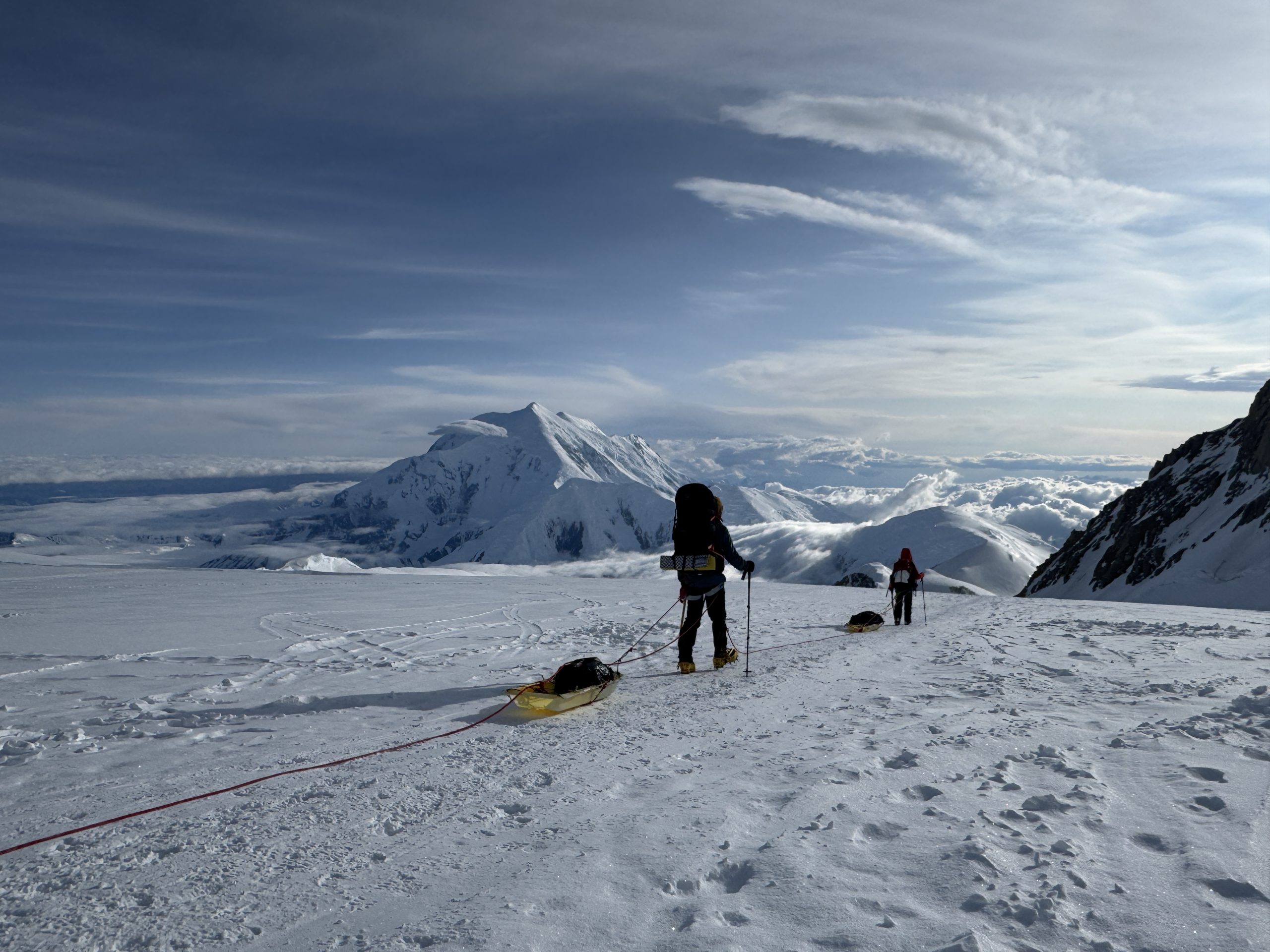
This detailed gear list is provided for your reference. Each item has been selected over many Denali expeditions. Please follow these guidelines carefully. Every item on the list is mandatory, and if you arrive in Talkeetna missing some of them, you will be required to track them down in town prior to the climb at your own expense, which can be difficult and costly. Please make sure you are fully prepared so that your trip and the trips of your teammates go smoothly. If you have any questions about the gear, please give us a call, and we can discuss it: we’re here to help!
Travel:
- In town clothes (some restaurants are nice, so a collared shirt/dress is not a bad idea)
- 2 large duffels, waterproof PVC rugged construction (like North Face XXL). One should be lightweight and will be used to haul in the sled. The second will stay at the hotel in Punta Arenas with your street clothes and other items not needed for the climb.
- Travel wallet
- Passport
- Cash
- Print out of team emails and bring them with you
- Hand sanitizer (small container, for the mountain and travel)
- Marker
- Pen
- Day pack for carry-on, 40L
Lower Body:
- Warm Down Booties
- 1 thin long john pants, and 1 pair of medium-weight long john pants
- 1 pair of medium-weight climbing pants
- 1 pair of Gore-Tex shell pants, must be full zip
- 1 pair of down pants, must be full zip
- 3 pairs of climbing socks (1 thin, 2 thick)
- 2 pairs of climbing underwear
- Triple climbing boots (like La Sportiva Olympus Mons or Millet Everest)
Upper Body:
- 1 ski/winter hat
- 1 ball cap for sun protection
- 1 balaclava/face mask (must cover your whole face (all exposed skin) with goggles
- 2- 3 buffs
- 1 pair of liner gloves
- 1 pair of lighter work gloves
- 1 pair heavy climbing gloves (like Black Diamond Guide Glove)
- 1 pair heavy mittens (like OR Altimitt)
- 1 pair of dark goggles (like Smith Turbofan)
- 1 Gore-Tex shell jacket
- 2 long john tops (1 light, 1 medium)
- Synthetic sun hoodie or trekking shirt, long sleeve (like Patagonia sun hoodie)
- 2 Upper body Pile Layer, like Patagonia R1 or similar hoodie (must be able to layer on top of each other
- Synthetic Puffball jacket, synthetic or down, medium-weight with front zip and hood or similar (like Patagonia Puffball)
- Ultra heavy-weight down parka with hood (like Mountain Hardware Absolute Zero)
Climbing Gear:
- Power battery/recharger/solar charger with cords (optional)
- Pee funnel (women)
- Ear plugs
- Camera or phone camera
- Small Aloe Vera for sunburn
- Hand Cream (optional)
- 1 sleeping bag, rated to -40C/F (like Marmot Cwm)
- 1 thermarest
- 1 ridge rest
- Lip balm
- Sunscreen (like All Good 35spf with high Zinc Oxide content)
- Book (optional)
- Alarm (on watch or other)
- Headphones (optional)
- Baby wipes, for staying clean
- Meds: (bandages, triple antibiotic ointment, tums, antacid, immodium, ciproflacin, azithromycin, ibuprofen, aspirin, blister kit, bandaids, etc) keep it fairly small and light to reduce weight
- Toilet paper (2 rolls)
- Pee bottle (1 liter)
- 5 large heavy-duty trash bags (for caching gear)
- 2x 1-liter Nalgene-type water bottles with full covers (Camelback-type hydration systems are unacceptable. They freeze, pop, and break, so are unreliable.)
- Large internal frame pack, must be 100+ liters (like Mountain Hardware BMG)
- Light harness (like Black Diamond)
- Helmet
- 1 pair of steel crampons
- 5 locking carabiners
- 9 non-locking carabiners
- 40ft of cordlette (7mm)
- 1 Ascender
- 1 single length sling
- 1 double-length sling
- 2 pairs of glacier glasses (one spare)
- Belt for climbing pants
- Collapsable ski poles
- 1 long alpine length ice axe
- 3 stuff sacks
- 1 compression sack
- 3lbs personal snack food (real food and stuff that you know you will want to eat at altitude when you don’t feel like eating: nuts, jerky, granola bars, dried fruit, candy, etc.)
- Cup
- Bowl
- Spoon
- Toothpaste and toothbrush
- Guides with a 2:1 client-to-guide ratio
- Small team (max 6 climbers)
- Transportation to and from Talkeetna
- Mountain Food
- All Group Gear: Four-season tents, cooking gear, group duffels, stoves, etc.
- Satellite Phone
- Glacier flights from Talkeetna to Denali and back
- Flights to and from Alaska
- Hotels in Talkeetna or en route to Alaska
- In-town Meals: All in-town meals are your own responsibility
- Personal gear: All personal climbing gear is the responsibility of the client
- Denali National Park Climbing Permit (around $500)
- In the event of a rescue, evacuation, or early departure from the group, any rescue expenses incurred or excess expenses above and beyond our normal trip costs, including transport, hotels, evacuation, flight changes, and gear shipping, are the responsibility of the client.
- Guide Tips (customary but optional)
- Expenses incurred due to events outside CTSS's control, such as delays or interruptions, political events, natural events, or disasters. These may include additional expenses, such as extra hotel nights, resulting from delays.
- Required trip insurance policy (for trip cancellation, interruption, rescue & evacuation, medical treatment, repatriation, etc.)
We feel that choosing the right guide service for a high-altitude climb such as Denali is one of the most important decisions you will make. Expedition leadership is of paramount importance when it comes to safety, success, and the overall enjoyment during an expedition. We strongly believe our organization is the best in the business; better than our competitors, both domestic and international. Some of the reasons we believe we can offer you the best experience at an exceptional value are as follows. We are here to help you make an informed decision, so please feel free to contact us directly.
- Best expedition at a great value. CTSS believes in providing our clients with the highest quality service in the industry at a great value. Climbing and trekking are our passions, and our goal is to share these unique places and experiences with you. We want you to feel good about your experience because we believe word-of-mouth is the best advertising, and that begins with satisfied customers. There is a difference between our expeditions and those of our competitors, especially local cut-rate options. In choosing us, you are hiring the finest guides and logistical support in the industry. Benefiting from nearly 20 Denali expeditions, well over 100 high-altitude expeditions, and drawing on decades of first-hand guiding experience, we have worked hard to refine our logistics in order to offer you the highest chance of success at an exceptional value.
- We are a modestly sized guide service with highly personalized service. We maintain a moderate size so that we can tailor our Denali experience to you. Not all climbers are the same, and this is why Mike Hamill will work with you directly to make sure you choose only the programs that are right for you. Don’t get lost in the numbers with one of the larger “climbing factories”. They can’t give you the attention to detail you need for climbing a peak as important as Denali.
- The best route. CTSS climbs Denali by the beautiful West Buttress route. By using this route ,we provide you with the highest chance of success and give you the best climbing experience available on the mountain. This is due to the more relaxed terrain and greater amount of time for acclimatization en route to the summit. You will see when you’re on the mountain that there’s no better way to climb the peak than via the West Buttress route.
- The Seven Summits specialist! Climbing the Seven Summits is THE Seven Summits specialist. We focus primarily on the mountains of the Seven Summits, and Denali is one of our favorite mountains. We have been perfecting our logistics on Denali for decades to create the perfect climbing experience for you. We love the diversity of the “Seven Summits” and the challenge of climbing them all, and that is why we focus on these climbs in particular.
- Best guides. The quality of an expedition is, in large part, dictated by the individual guide(s) leading the trip. CTSS hires only the finest guides operating at the highest standards for client care who are highly trained, well-respected in the industry, and close friends that we trust. They have excellent personalities and are some of the most experienced professionals in the world. Mike and the rest of our guides are strong leaders who hold the high standards you’d expect from the premier expedition company. Our guides make our company what it is and have extensive resumes of personal climbs, high-altitude guided climbs, and certifications. All our lead guides maintain at least a Wilderness First Responder medical standard. Our Sherpa and local guides around the world are the best in the industry and do an amazing job helping you attain your goals and navigating local obstacles.
- Safety. Our primary goal at CTSS is safety. We have an unparalleled safety record, and our clientele’s well-being factors into every decision we make while on expeditions. Although we like to stand on the top of mountains more than anyone, we believe that climbing is a round-trip endeavor, and getting you back to your loved ones safely is paramount. We take many safety precautions, including bringing multiple communication devices, high-altitude safety equipment, medical kits, and the highest-quality gear to ensure a safe environment in which to climb.
- Success. Success rates on expeditions under Mike’s leadership are among the best in the business. (please refer to the summit statistics chart for more details). Mike has maintained an excellent success rate for expeditions under his direct guidance on Denali. This is a testament to our small, personalized service and attention to detail. Mike and our team of guides are incredibly proud of their summit success and work hard to get their clients to the top. As Mike says, “You can’t buy a summit, but you can buy better odds.” With our expertise, experience, and infrastructure, you can stack those odds in your favor. We offer a longer acclimatization progression for proper acclimatization to mitigate the risks of altitude sickness. Many guide services race their clients up the mountain, especially local companies, to cut corners on costs. We are highly invested in our reputation for safety and success and are always striving to improve our programs to maintain our hard-earned status. Decision-making in the mountains is supremely important, and our guides are the best in the business, have a hunger to summit on any trip, it’s safe to do so, and have a proven track record. All of our programs acclimate conservatively to mitigate the risk of having altitude issues and to give them the highest chance of success.
- You! Why choose us? Because of you! We consistently attract the best clients and believe this is because we offer the highest quality expedition at a great value. Our clientele takes the time to educate themselves about their options and choose us because of this. We feel that surrounding yourself with the right people will make you successful, and that goes for guide service owners, guides, and even those you climb with. Having a team with the right attitude and camaraderie is a key factor in making you successful.
- Logistics. Our partnership with our concessionaire partner, Mountain Trip, provides you with the finest logistics on offer. Mountain Trip has been outfitting Denali expeditions for decades and is simply the best in the business. Our logistics, flight service, food, etc, are the best available. This means eating well and living well. We feel that these creature comforts go a long way to making the time in the backcountry enjoyable. We work with the best local outfitters and provide the best local logistics, hands down.
- Professional Business Practices. Running a professional guide service that you feel comfortable putting your trust in is important to us. Because of this, we comply with all local, state, federal, and international laws. We hope that this makes you feel more confident about choosing us and our programs.
- Enjoyment. This is your vacation, and you’re here to have a good time. Our goal is to give you the experience of a lifetime, inspire you in the mountains, and have a great time doing it. This, again, comes back to our guides; they all have great personalities, and their love for the mountain is contagious.
- Because you care about giving back and local communities. A portion of the profit from each program goes to the Tiger of the Snows Fund. CTSS Owner Mike Hamill began TOTs in 2014 to provide educational opportunities for workers involved in outdoor tourism and their families globally. Visit the website at www.tigerofthesnows.com. By climbing or trekking with CTSS, you are making a conscious decision to be a global citizen and support education and local communities. In supporting The Tiger of the Snows Foundation, CTSS is creating stronger communities and giving back to the people who give us so much on our expeditions in the best way we know how: education.
- Low client-to-guide ratio. We operate all of our trips at a low client-to-guide ratio, which offers you a better, safer, and more personalized experience.
Each expedition is led by Mike Hamill.
Mike Hamill, lead guide and owner of CTSS, is universally regarded as one of the most experienced and respected high altitude mountaineers and expedition leaders in the world.
He has personally guided thousands of climbers on the Seven Summits and well over 150 climbers have stood atop 8000m peaks, including Everest with him. A guide for over 20 years, he boasts a 91% expedition success rate and an 83% climber summit success rate for all of his expeditions worldwide.
He has stood on top of Everest 6x and currently holds the record for most non-Sherpa summits of Cho Oyu. He’s also the author of the guidebook “Climbing the Seven Summits,”
To complement his leadership, Mike has hand-picked a selection of the finest mountaineering professionals from around the world to make up the international CTSS guiding team.
Our team are highly qualified and some of the most highly experienced climbers in the world. Chosen for their attention to detail, safety records along with their fun, genuine and caring personalities, we have no hesitation in saying they are the best. Mike holds the CTSS staff to the same high standards as he holds himself.
Who you choose for expedition organization and leadership is a big deal – it can be the difference between a great expedition and a miserable, potentially dangerous one and you only want the best in your corner. The fact that Mike and his guides have an unprecedented safety record should be a paramount consideration in who you choose to climb with.
Mike and the CTSS team’s love for the mountains and adventure continues in our corporate social responsibility policy. A portion of profits and fundraising climbs are organized every year in support of the “Tiger of the Snows Fund” a not-for-profit that provides grants to further education of mountain tourism workers and their families.
“Great leaders like Mike inspire and lead people to take on challenges and achieve great things.” -Tim Igo
Climbing the Seven Summits’ primary aim is to help you attain your personal climbing and trekking goals while experiencing the best of our planet, its unique cultures. and environments.
We strive to offer the highest quality mountaineering expeditions and treks at a great value while focusing on our primary goals: safety, success, and enjoyment.
We achieve this by bringing our extensive experience, top-of-the-line logistics, individualized and world-class guides to each adventure we undertake.
To give our clients the highest possible chance at success we are detailed in our approach, ensuring we’ve dotted our ‘i’s and crossed our ‘t’s. We provide personalized service, employ conservative acclimatization schedules, use top-of-the-line mountaineering, camping, and communications gear, hire only the best mountain leaders, and we don’t skimp on costs.
Our expeditions strive to set the highest standards and climb in “good style.” By this, we mean prioritizing the well-being and safety of our teams, leaving no trace on the environments we operate in, respecting culture, contributing to local economies by employing regional partners and paying them higher than the industry standard, and working in a self-sufficient and self-reliant way. We promote a responsible approach to adventure travel by connecting people to the natural world and giving back to local communities by donating a percentage of every expedition to the Tiger of the Snows Fund.
We take immense pride in our expeditions, and this shows in the positive feedback we receive from our teams who form lasting friendships forged in the mountains as they work together and overcome tough challenges.
For more client testimonials, please visit our Success & Reviews page, where you can find quotes reflecting CTSS’s leadership and experience. If you would like to talk to previous customers as references, please contact us, and we can put you in touch with many satisfied climbers. Please feel free to contact us by phone or email, and we will be happy to discuss the expedition with you. Joining a climbing or trekking expedition is a significant undertaking, and it’s essential to feel confident in the expedition leadership. The majority of our clients are repeat customers, largely due to their overwhelmingly positive experiences.
Denali FAQ
Yes, the mountain tents will be shared accommodations due to limited tent space and the weight of carrying extra tents.
In general, climbing packs on Denali are about as heavy as you will see anywhere. You will be climbing everything you need for 3 weeks in a cold and extreme environment on your back and in a sled. You will leave base camp with over 100lbs of gear which you will split up to double carry to camps up the mountain. You will then need to cary all of your equipment down and off the mountain in one go.
Yes. Trip delay and cancellation, rescue, repatriation, medical insurance is mandatory for this program for your own benefit. We have seen too many times people need to cancel their trip either before or during the expedition for reasons such as injury, health, family and business matters. With such a long trip and so much at stake, climbers need to be prepared for contingencies.
In general our food on and off the mountain is excellent. There are several good restaurants in town, and the food on the mountain is first rate. Our partners at Mountain Trip make every effort to make sure you have the best, healthiest, lightest, and heartiest food of any company on Denali.
